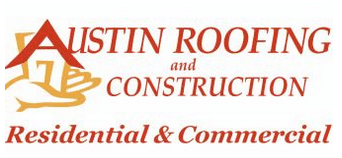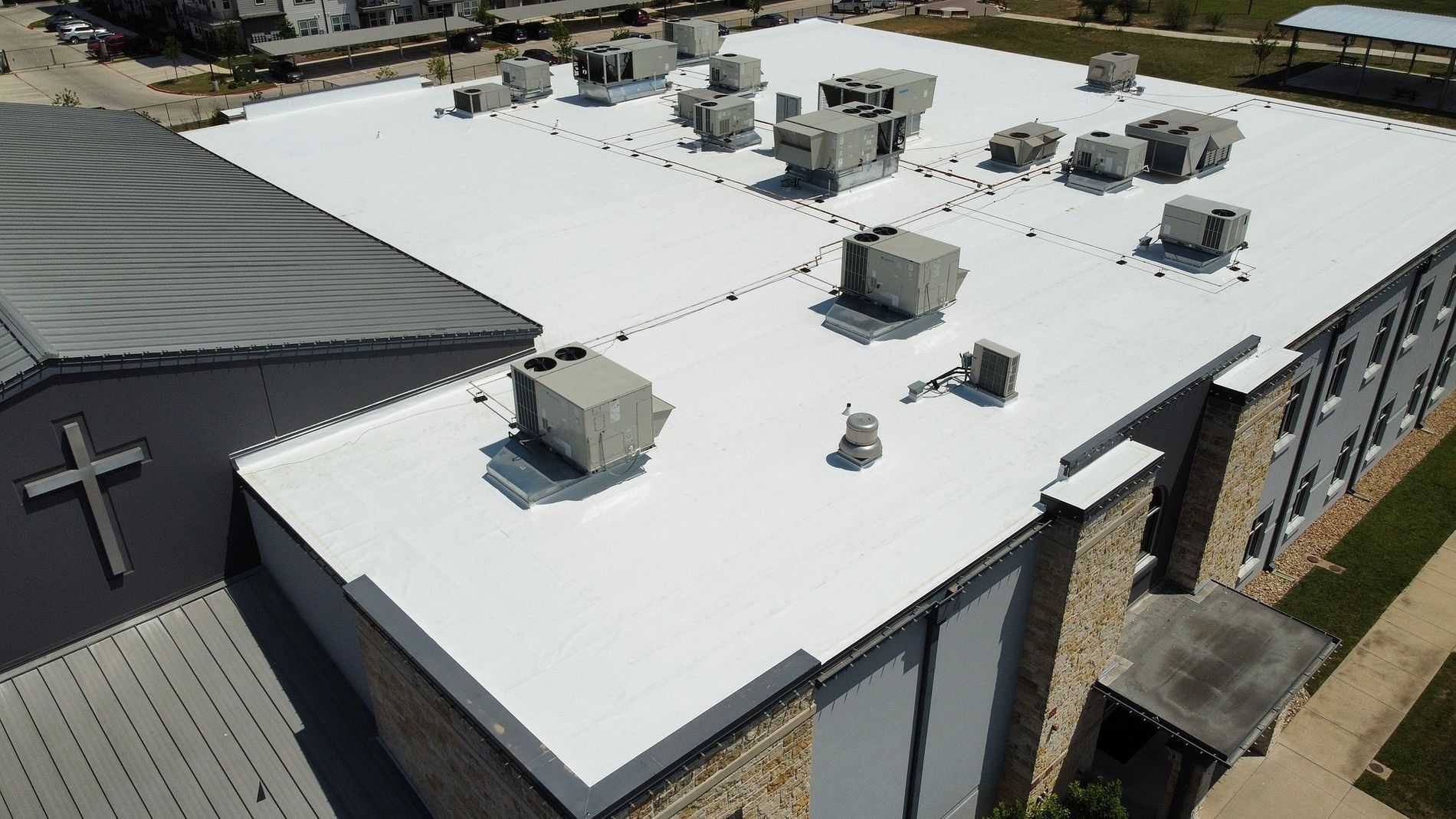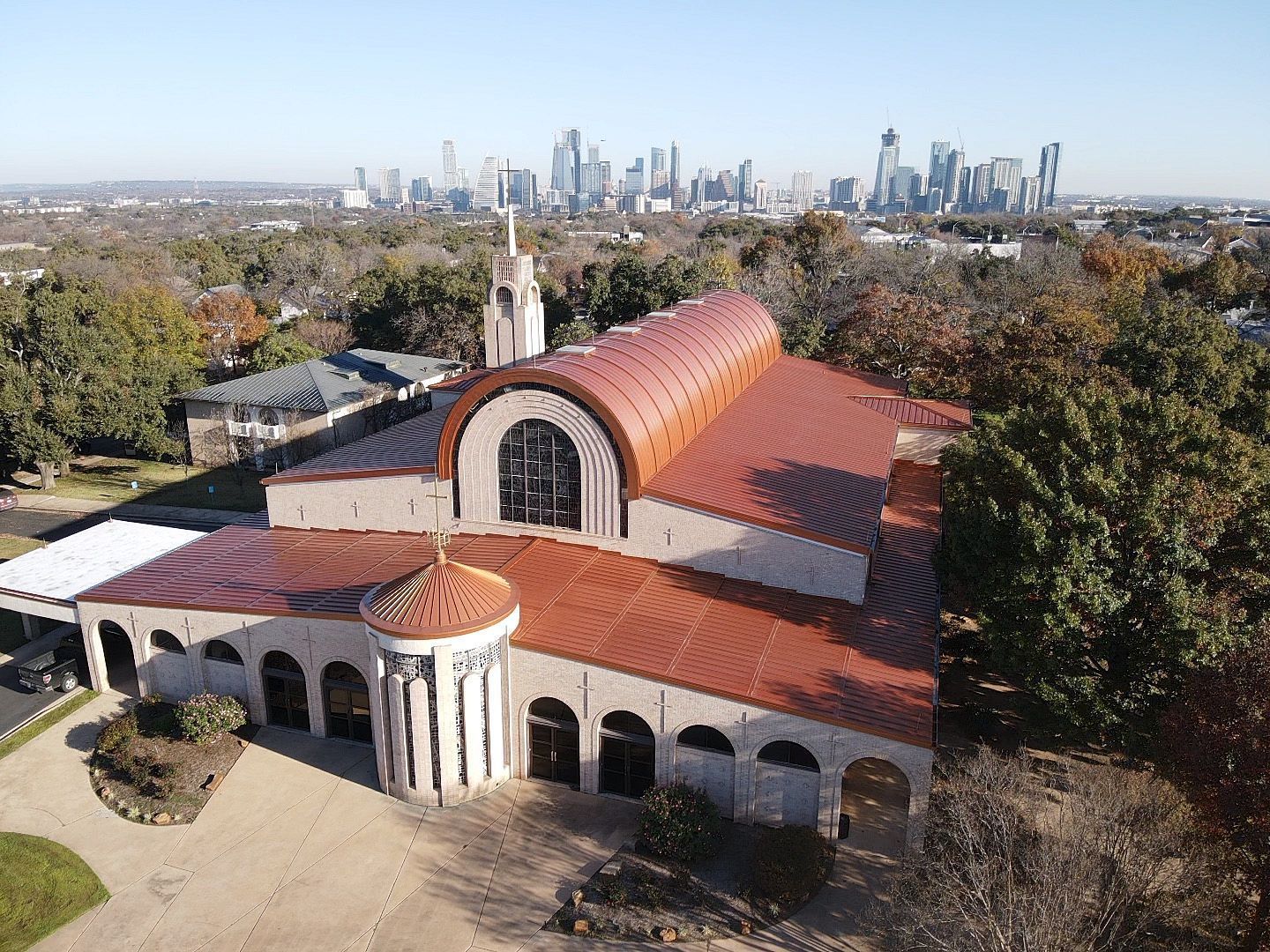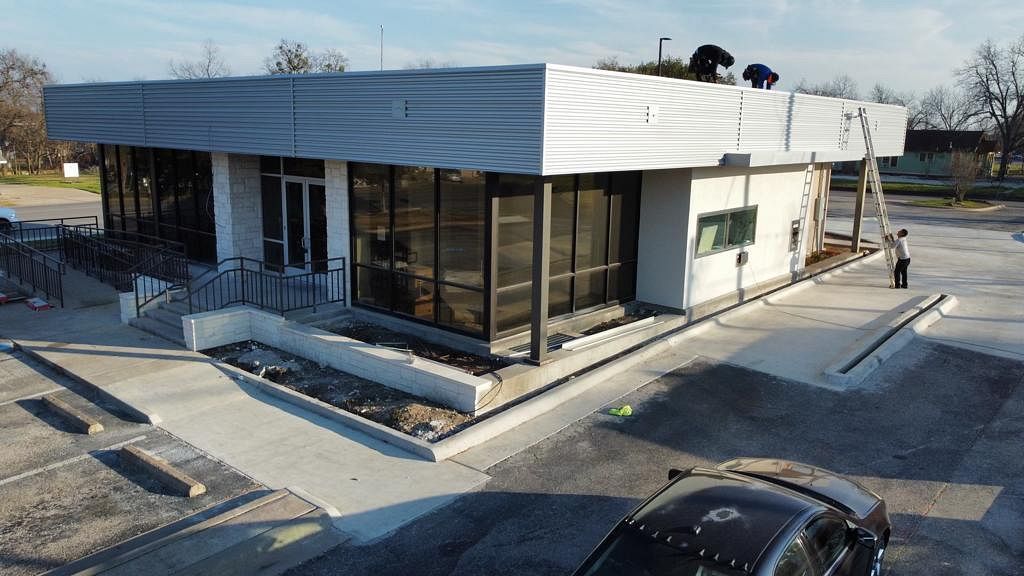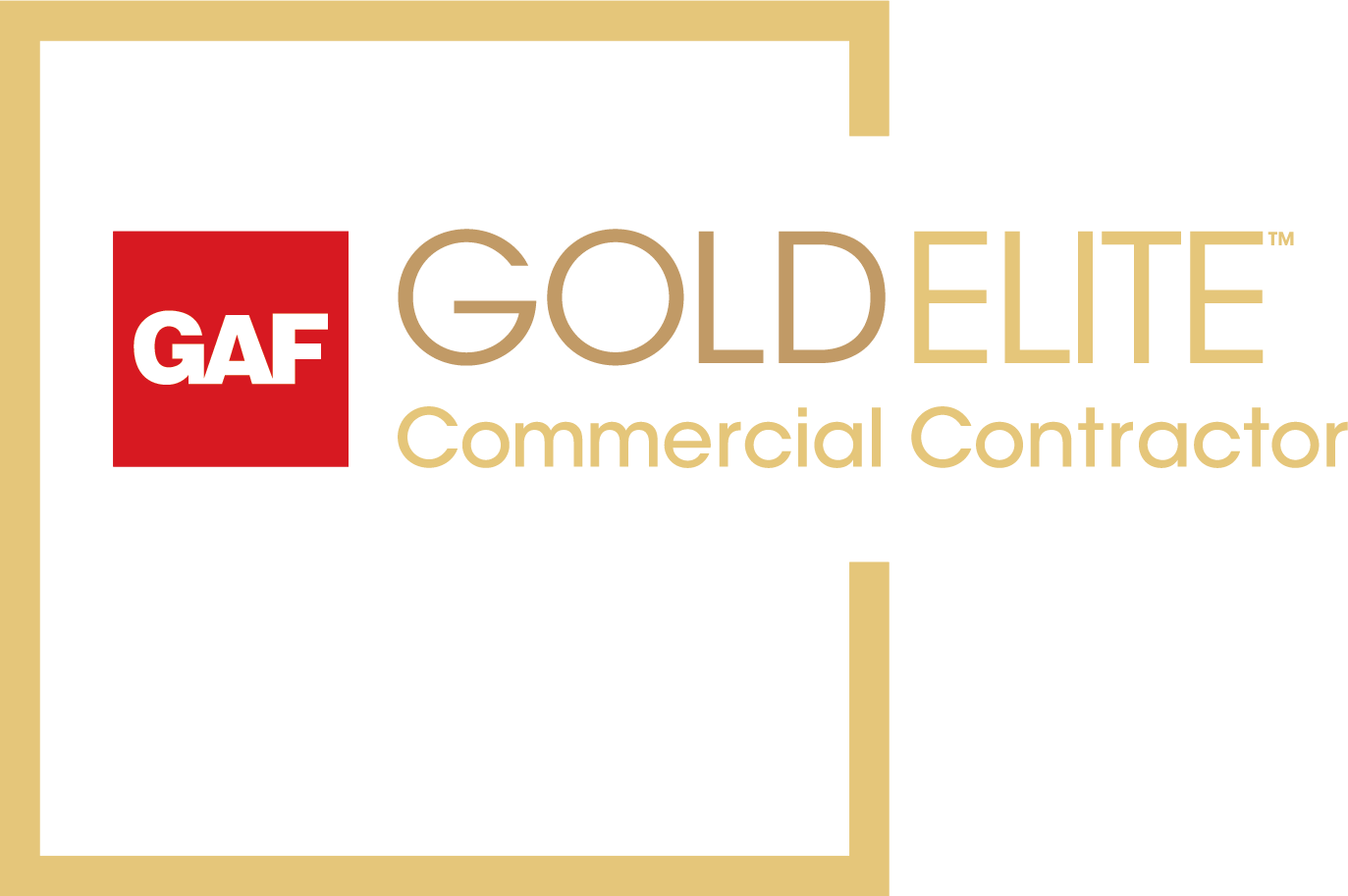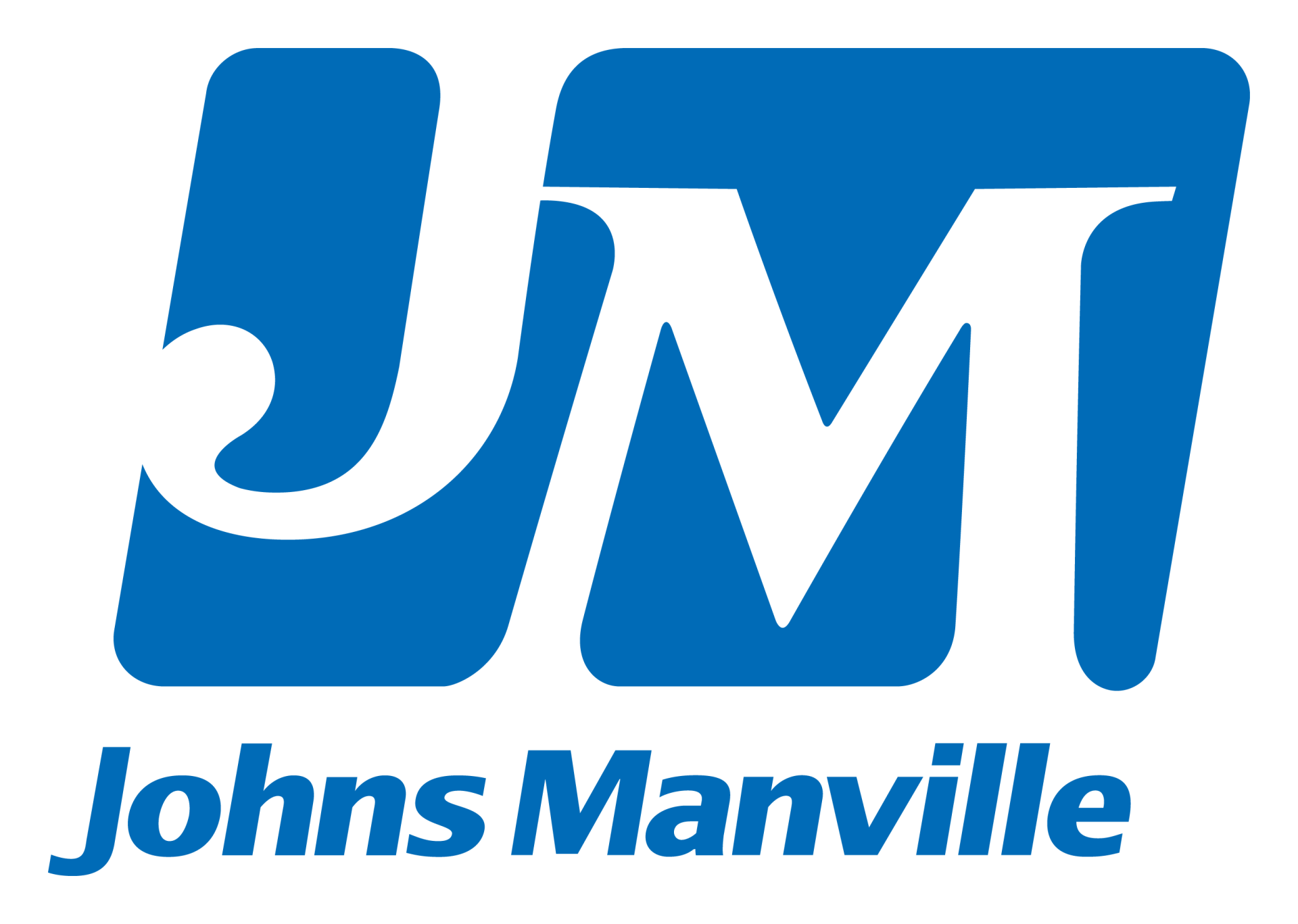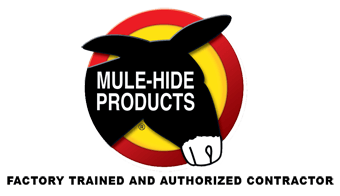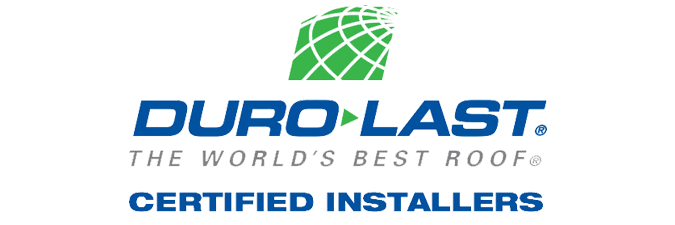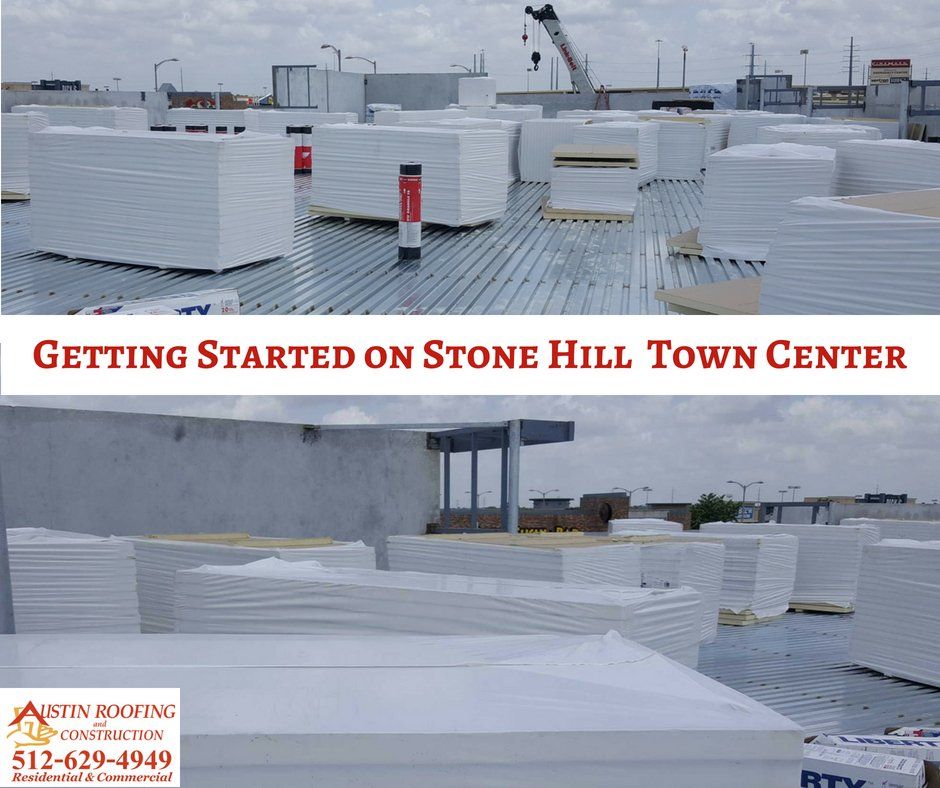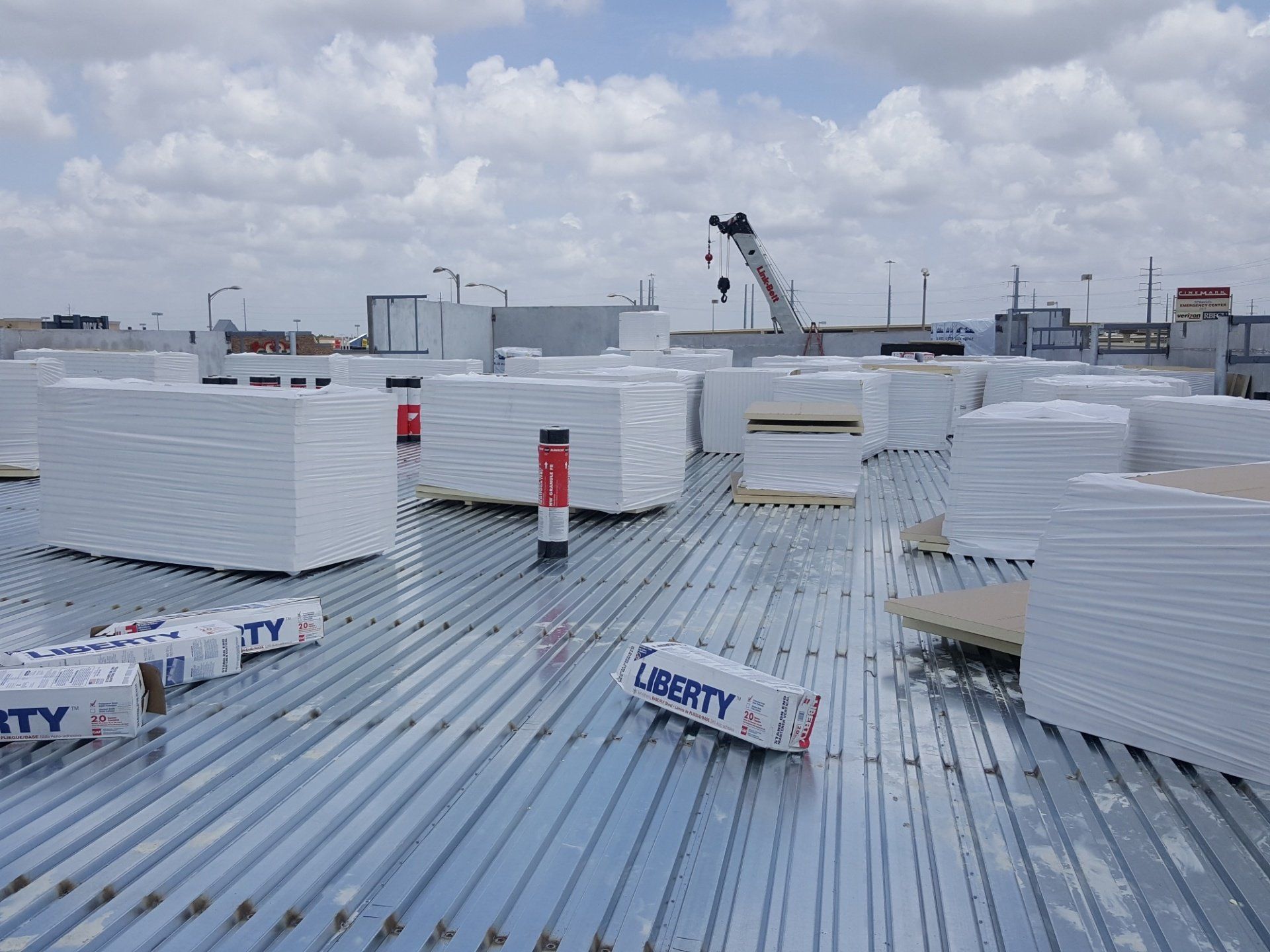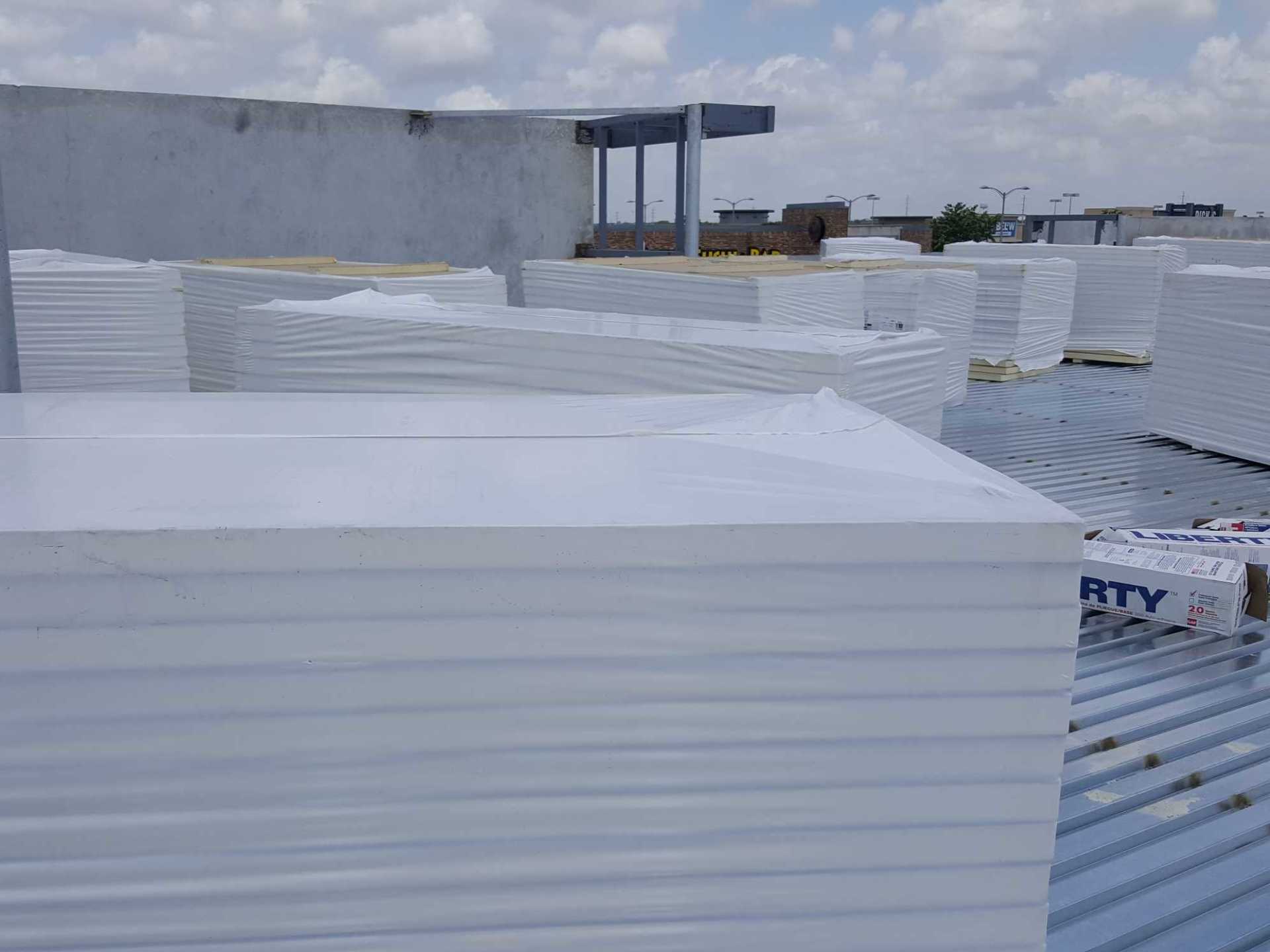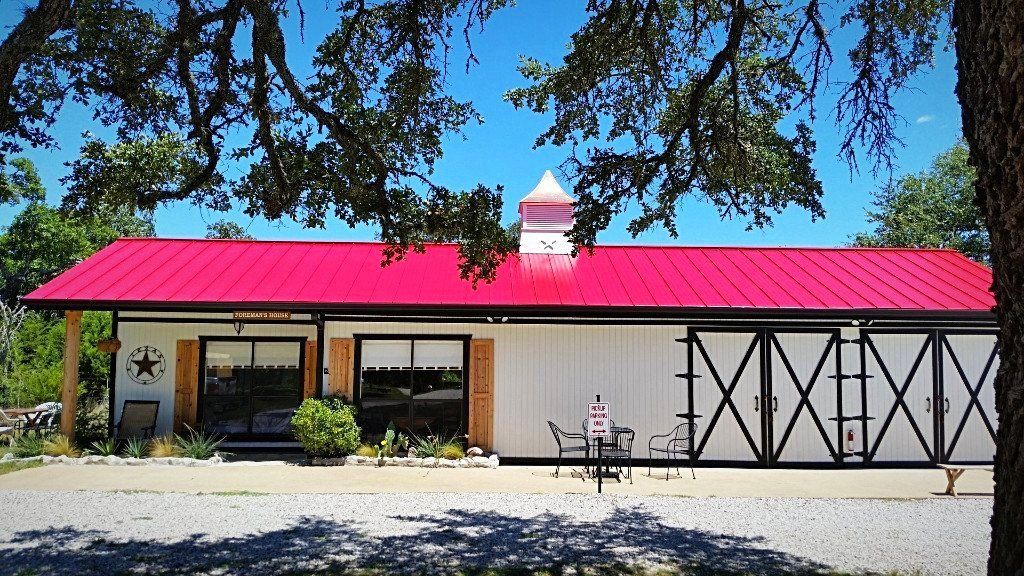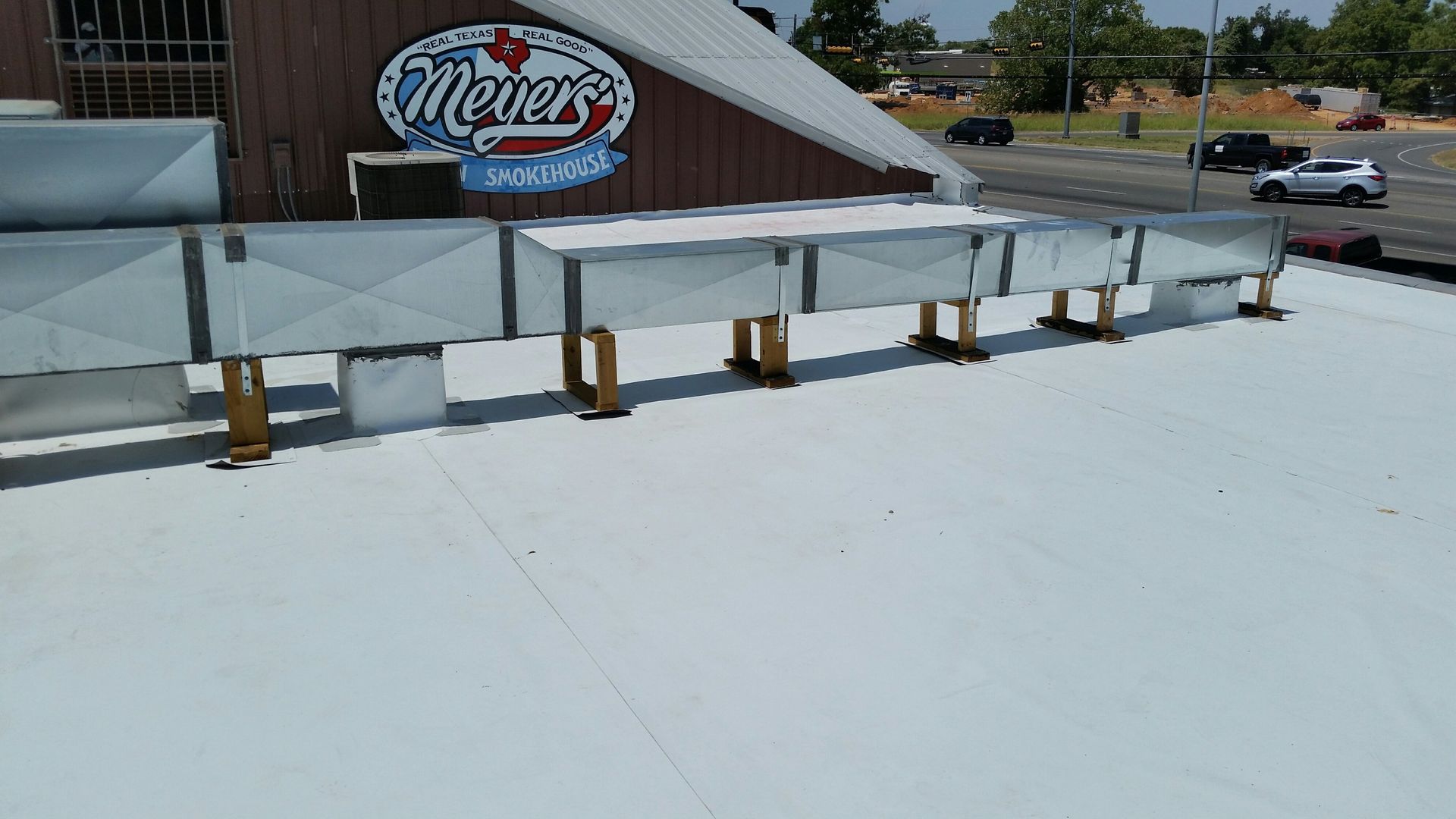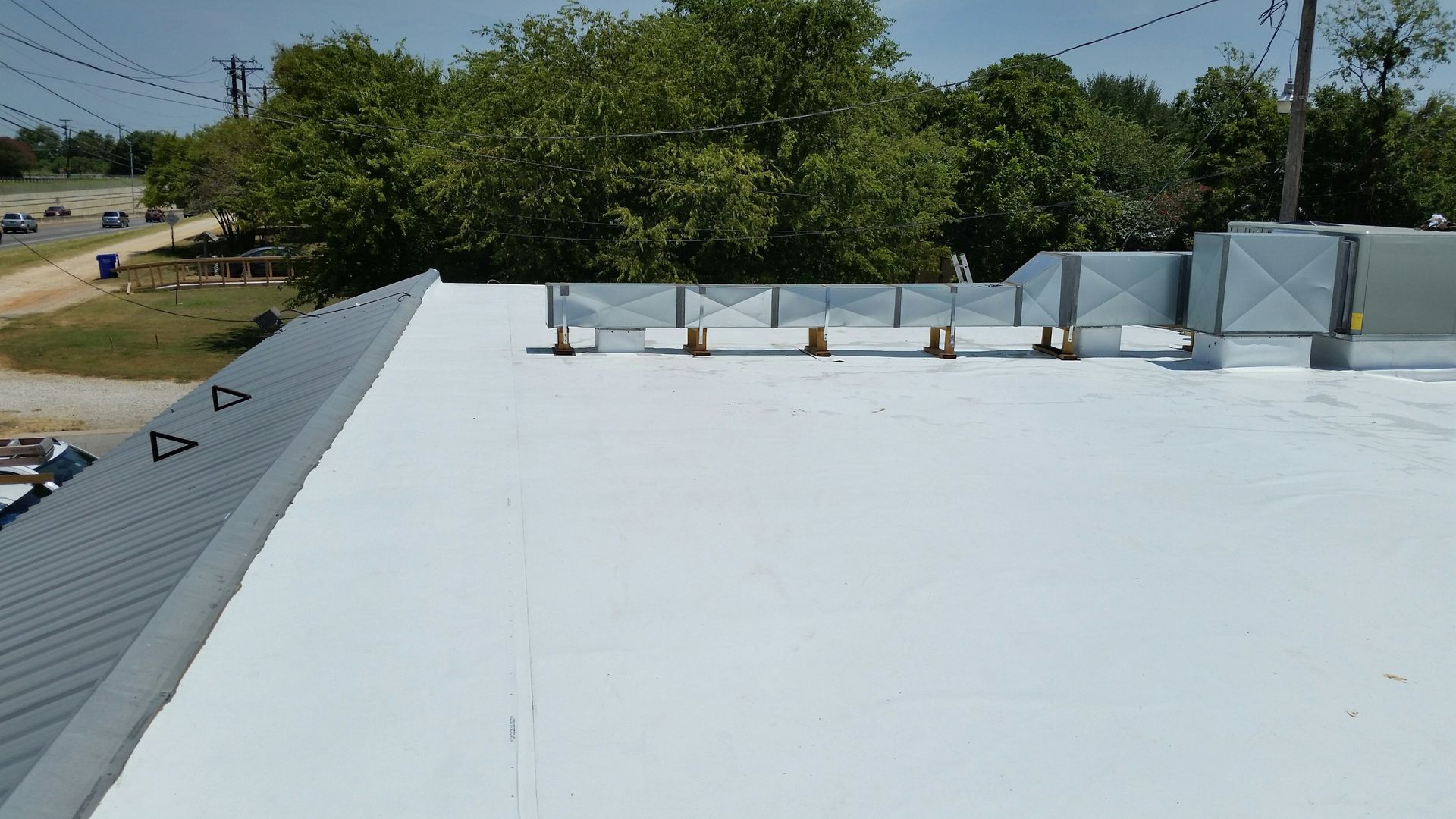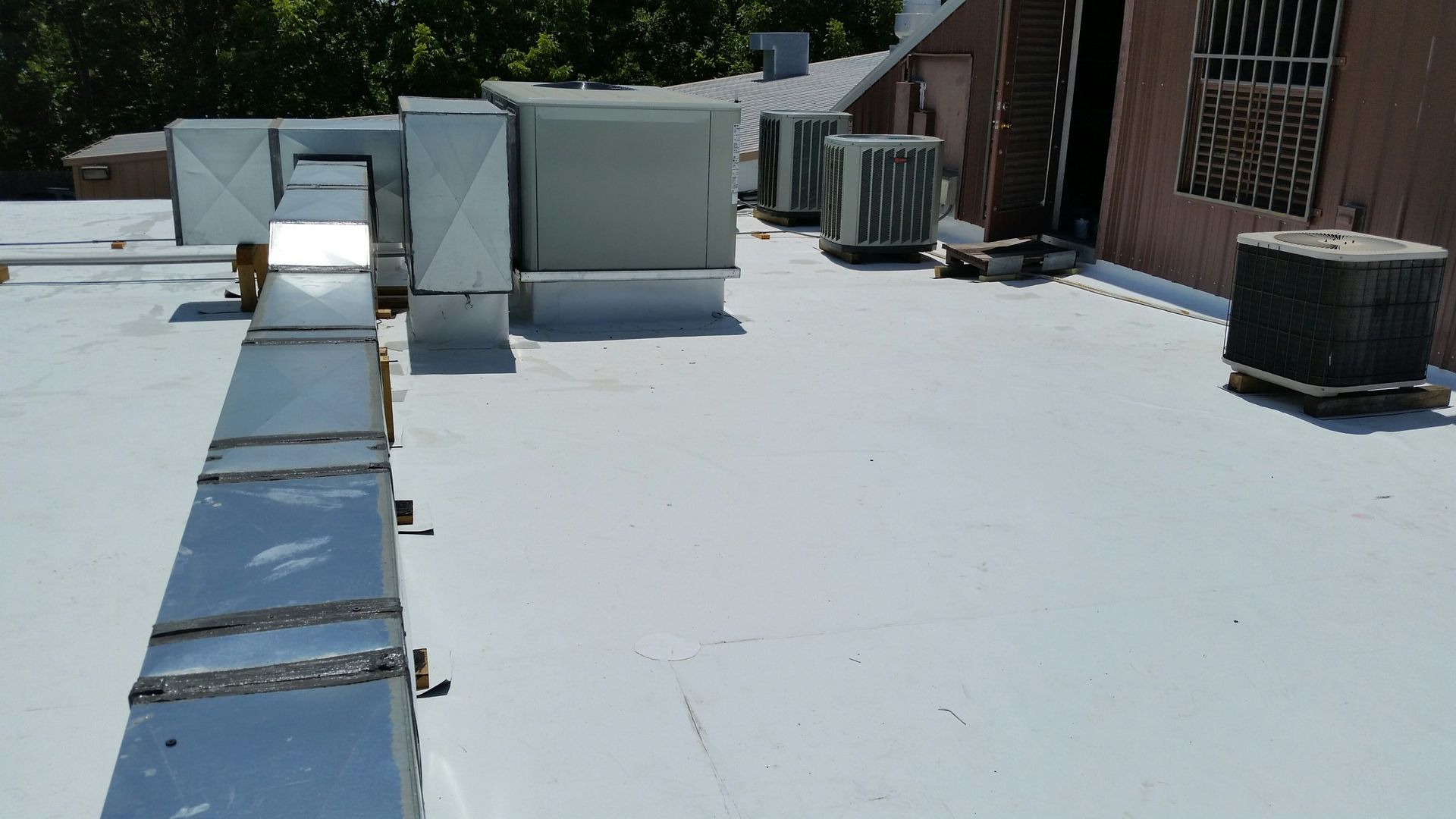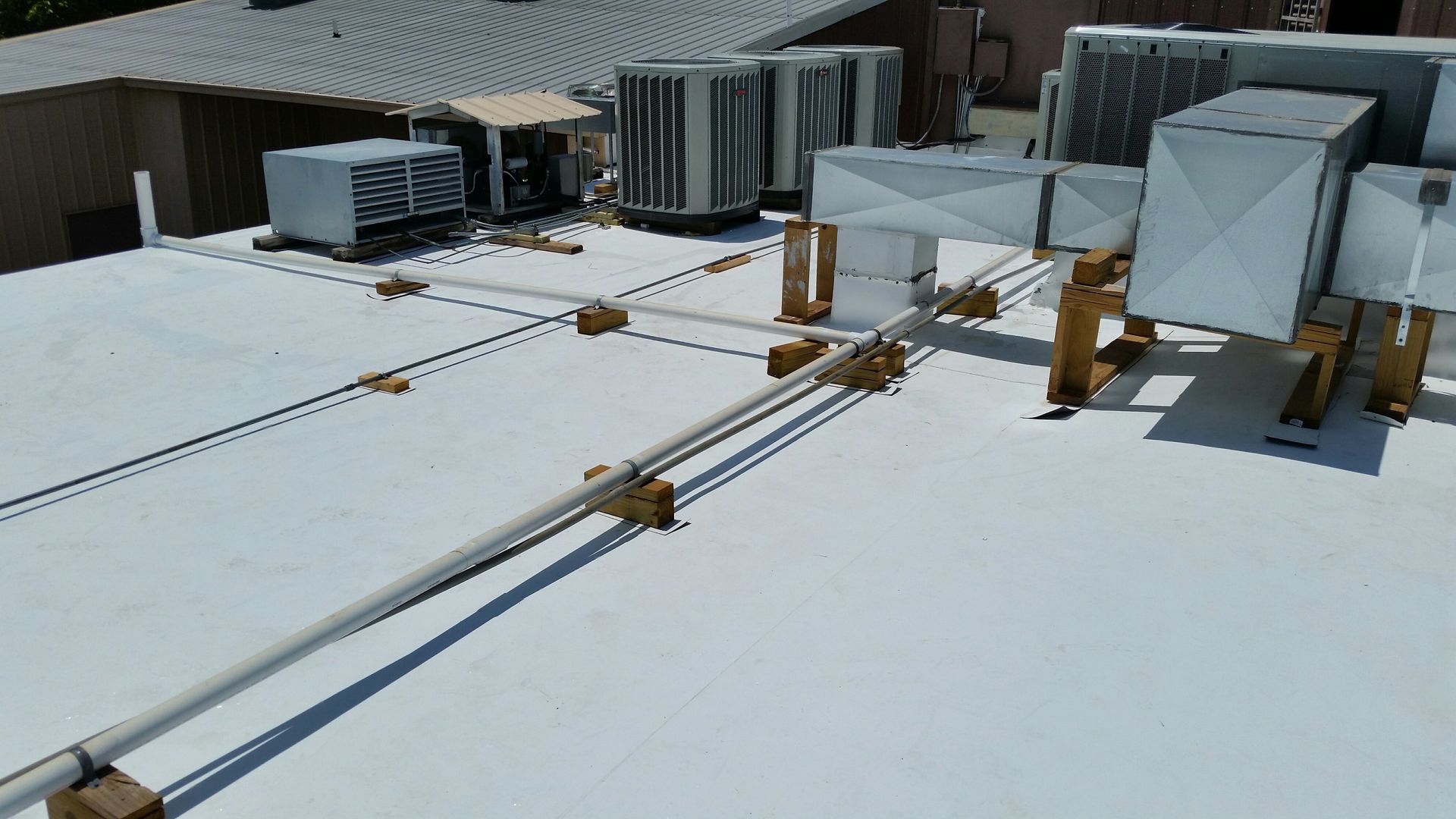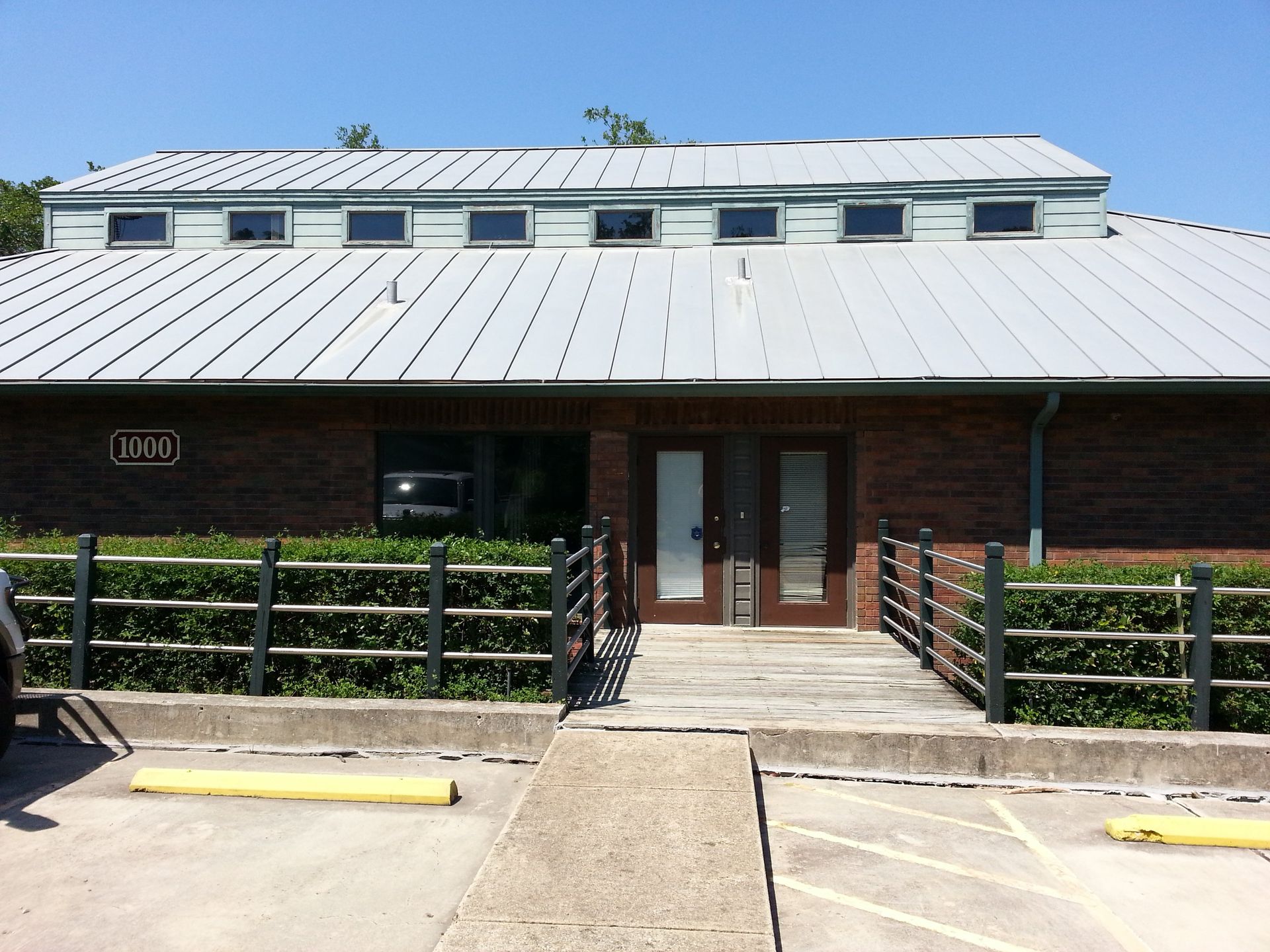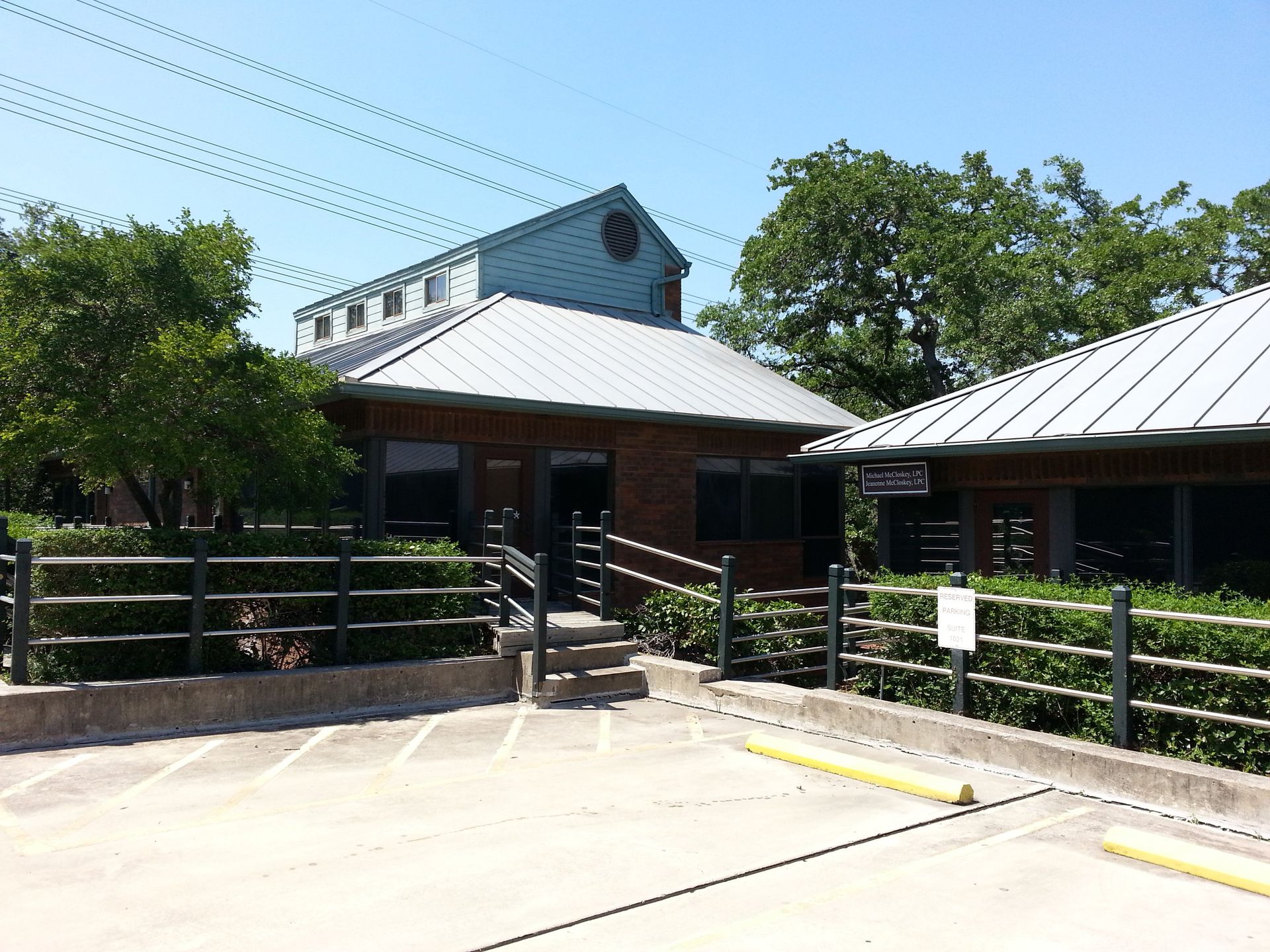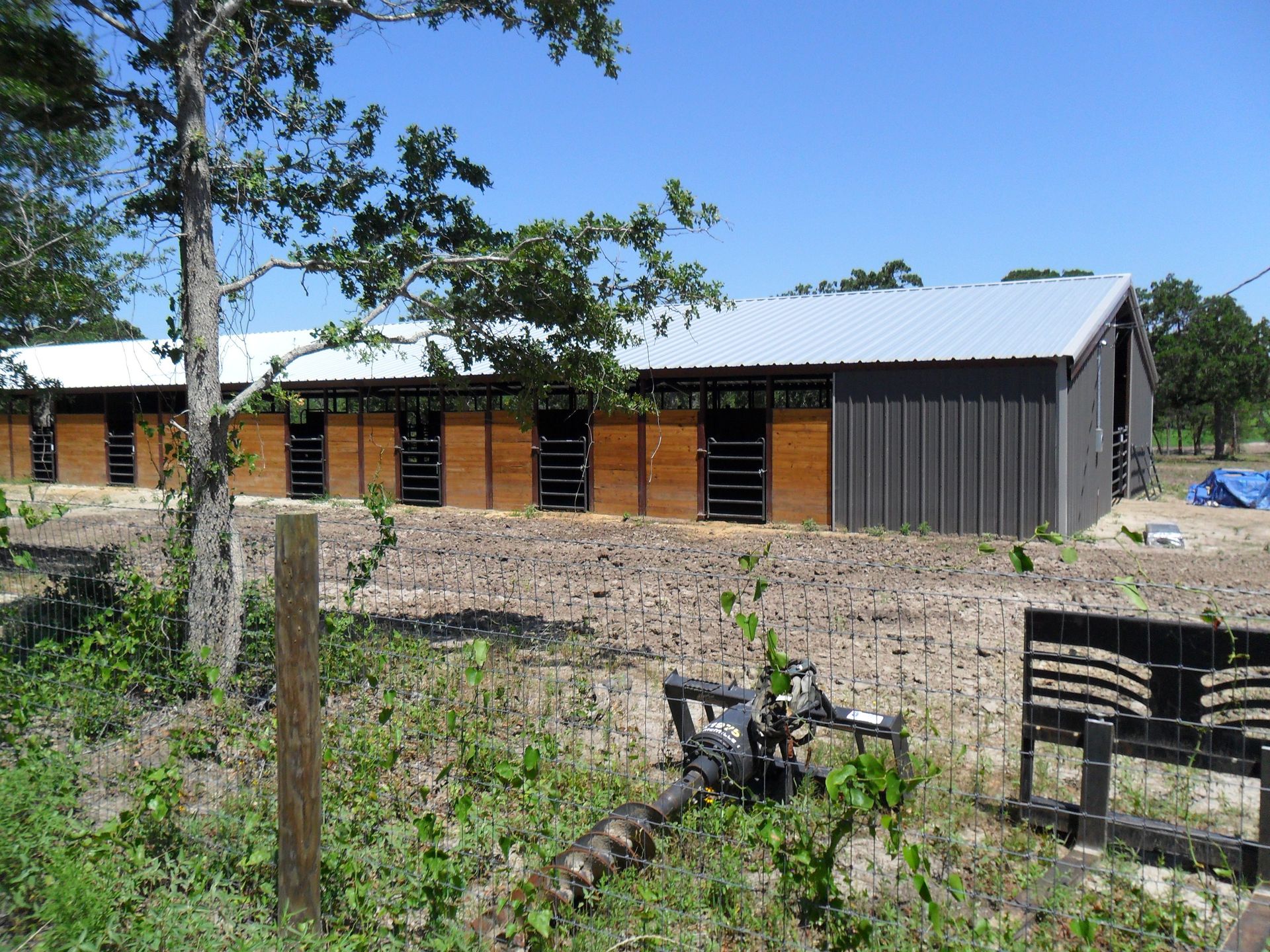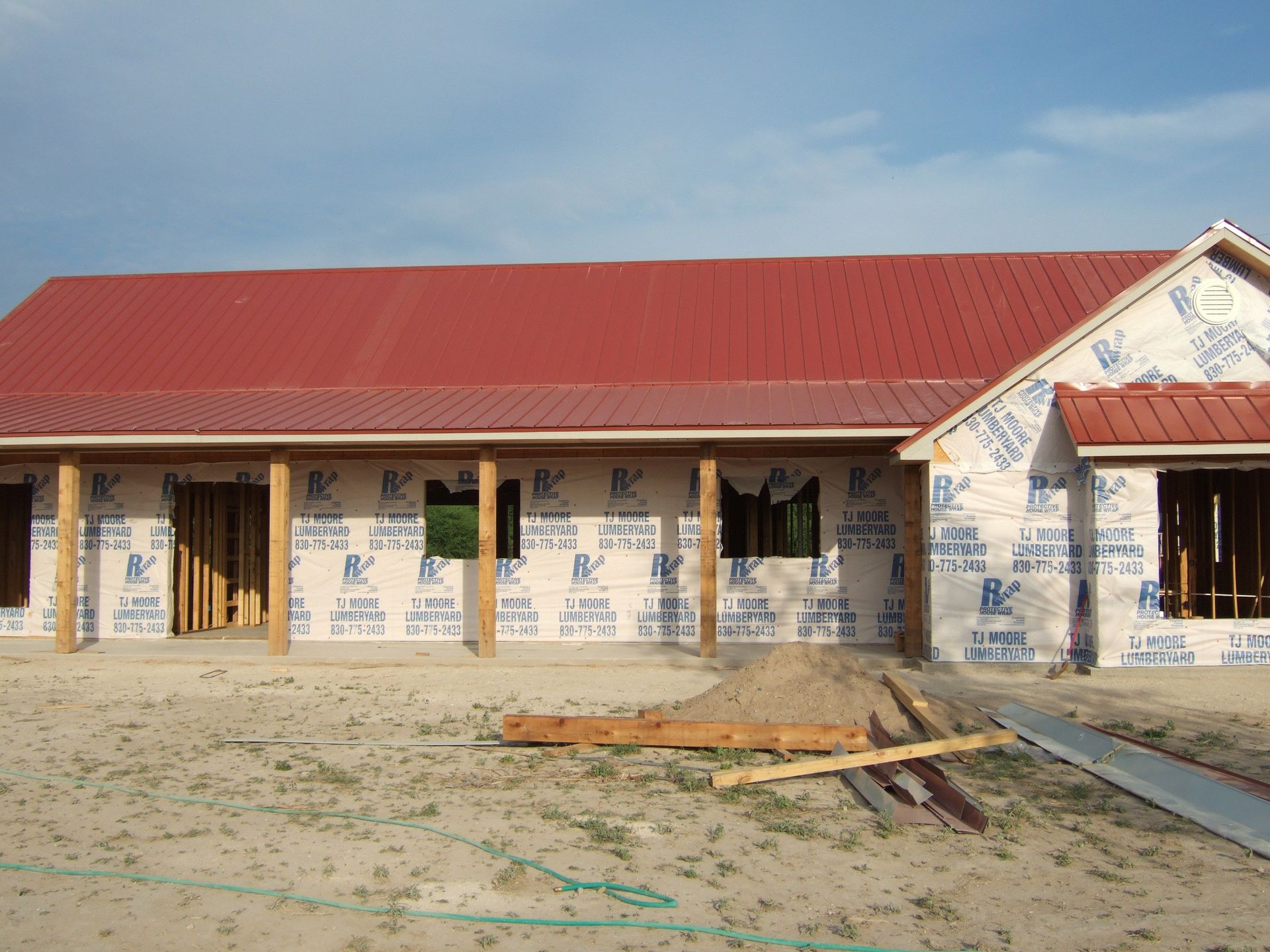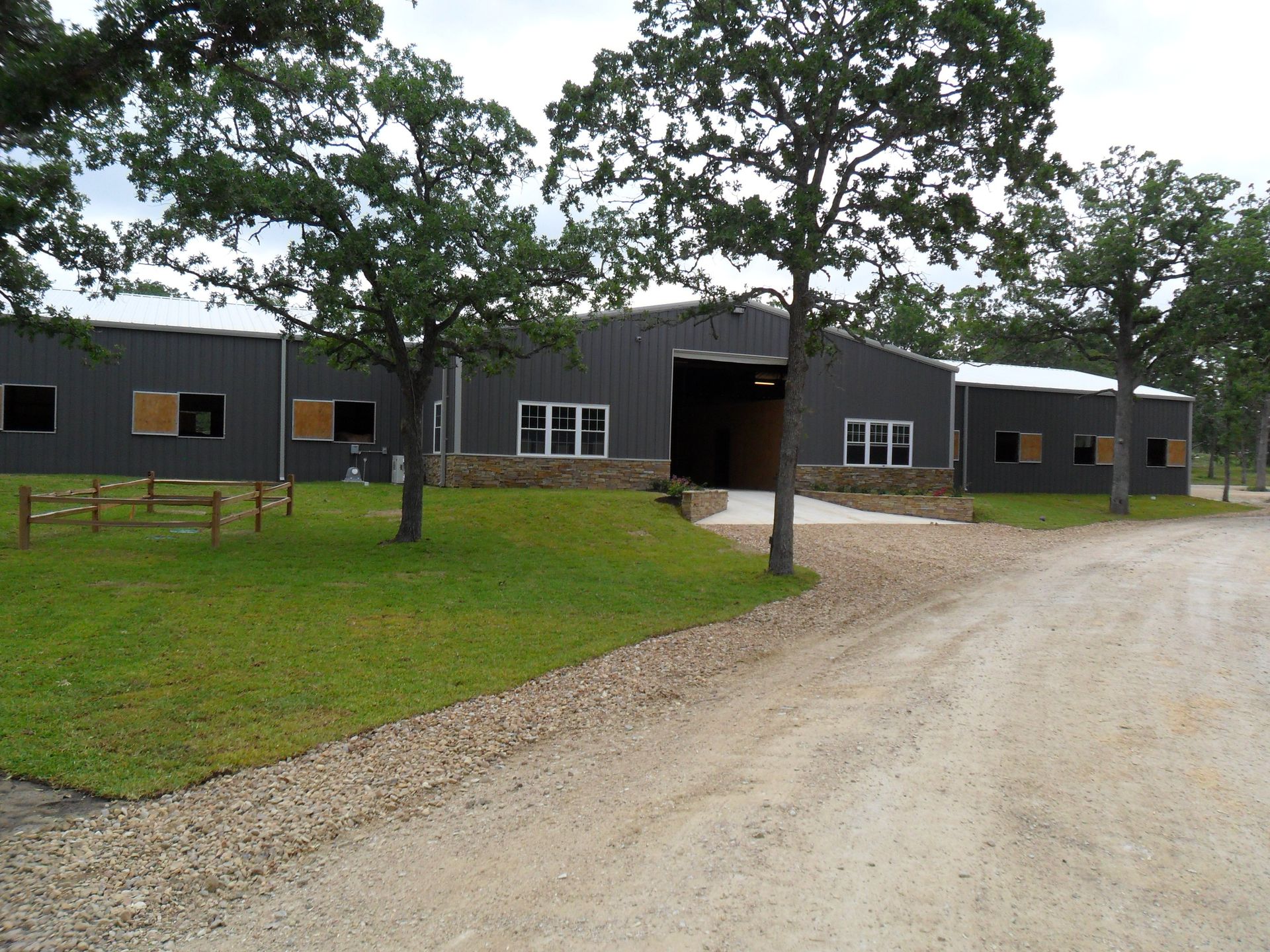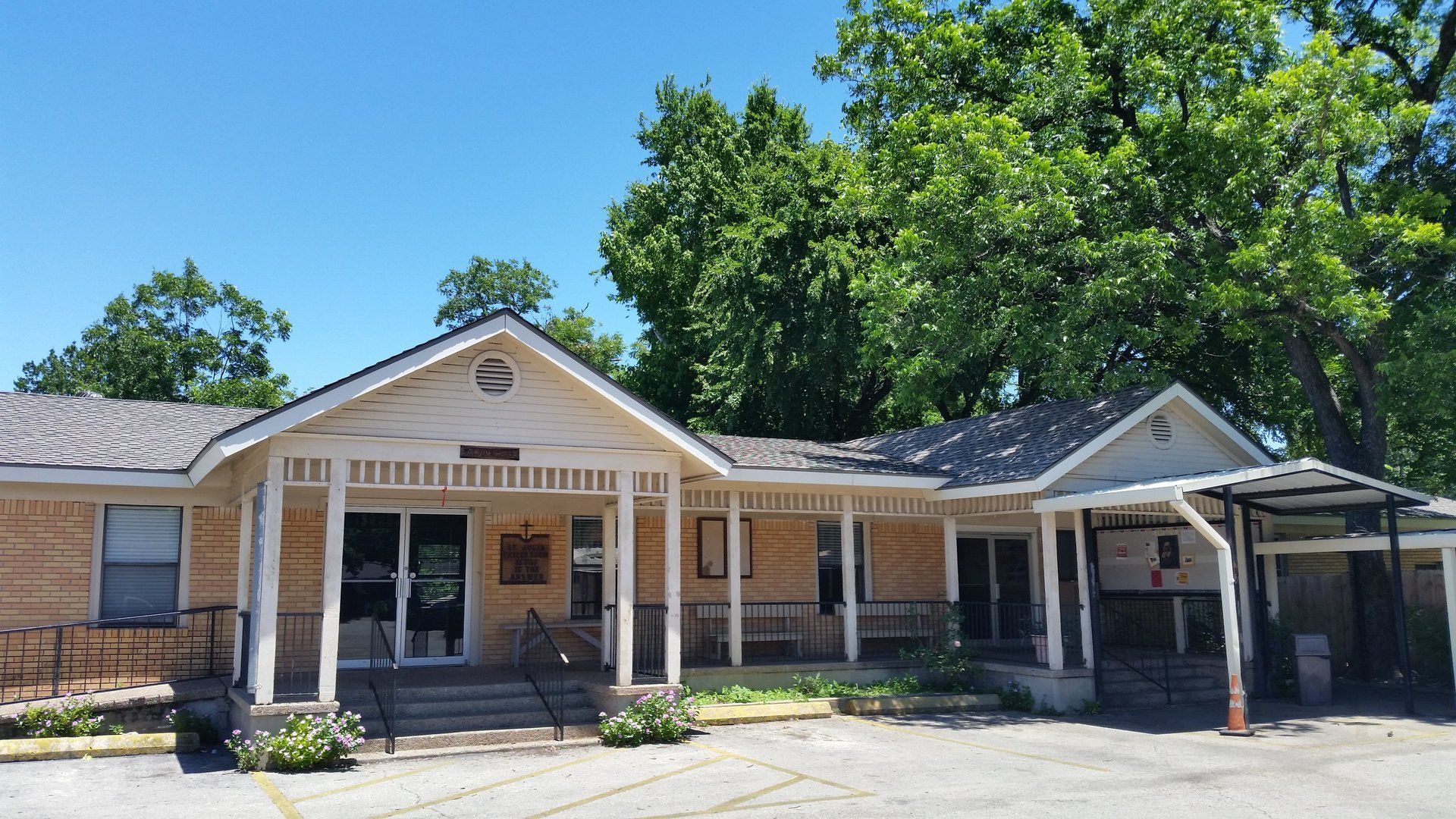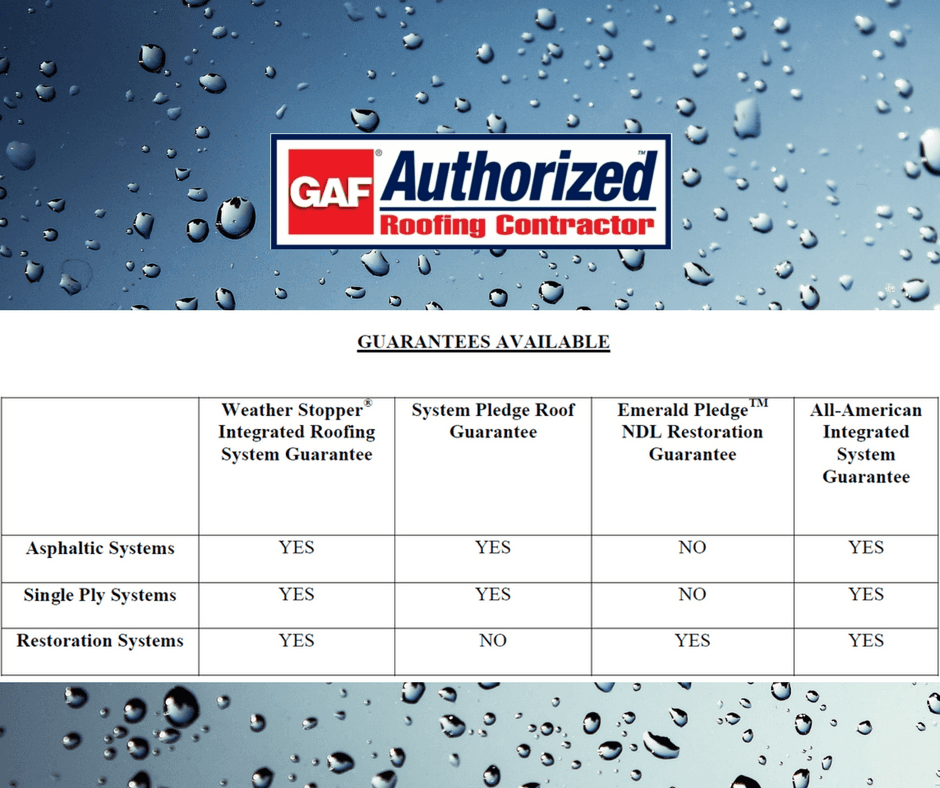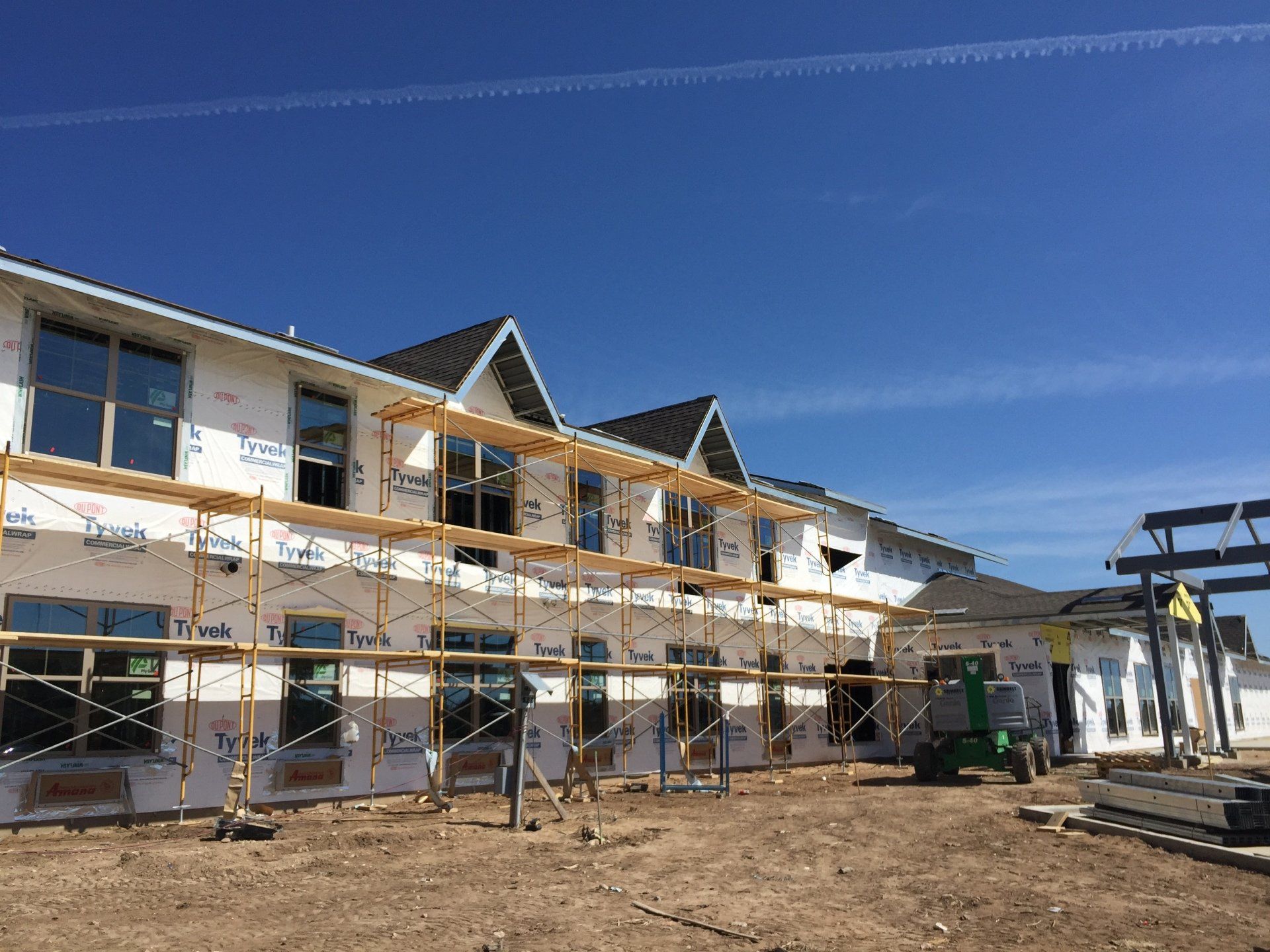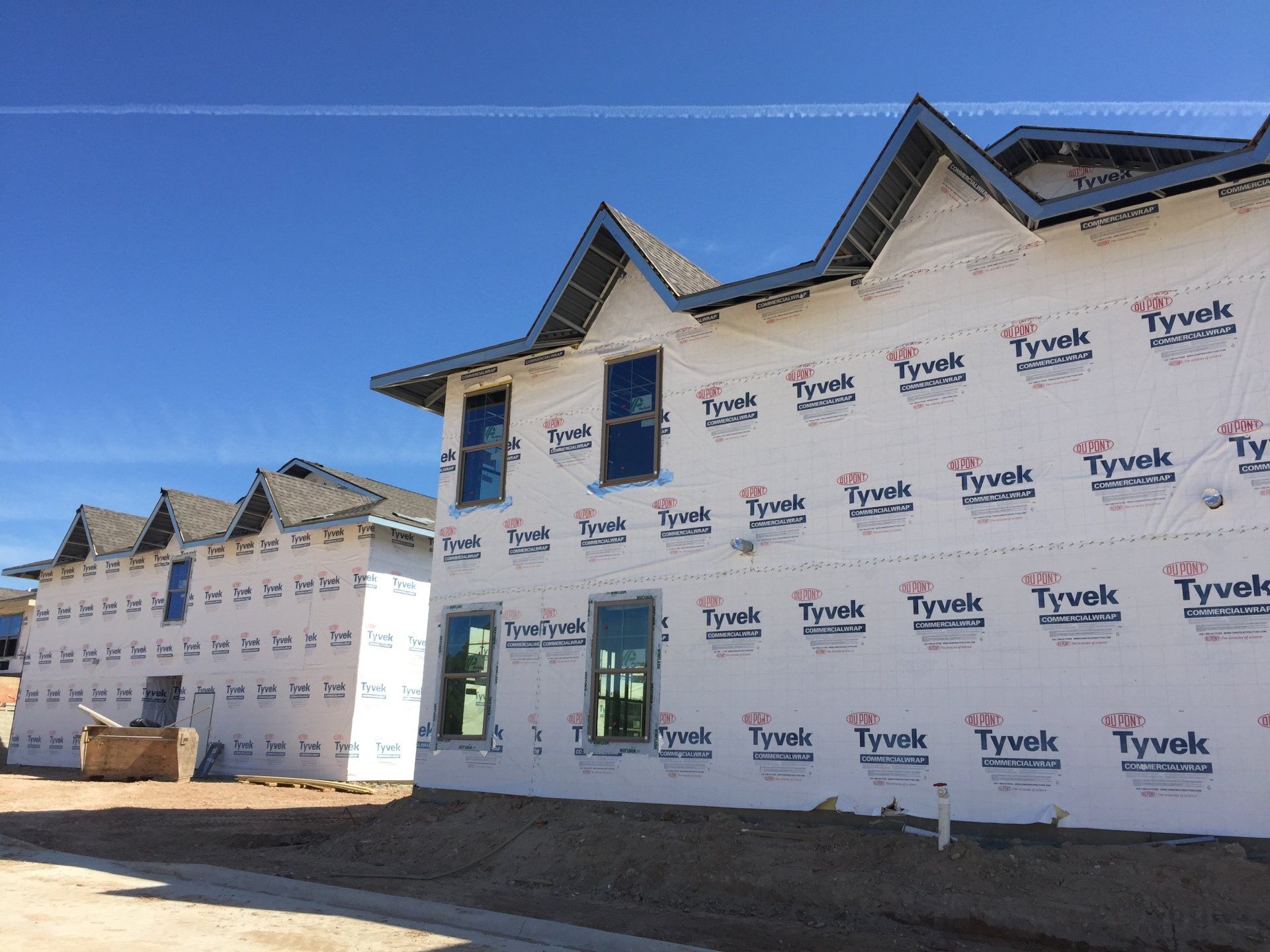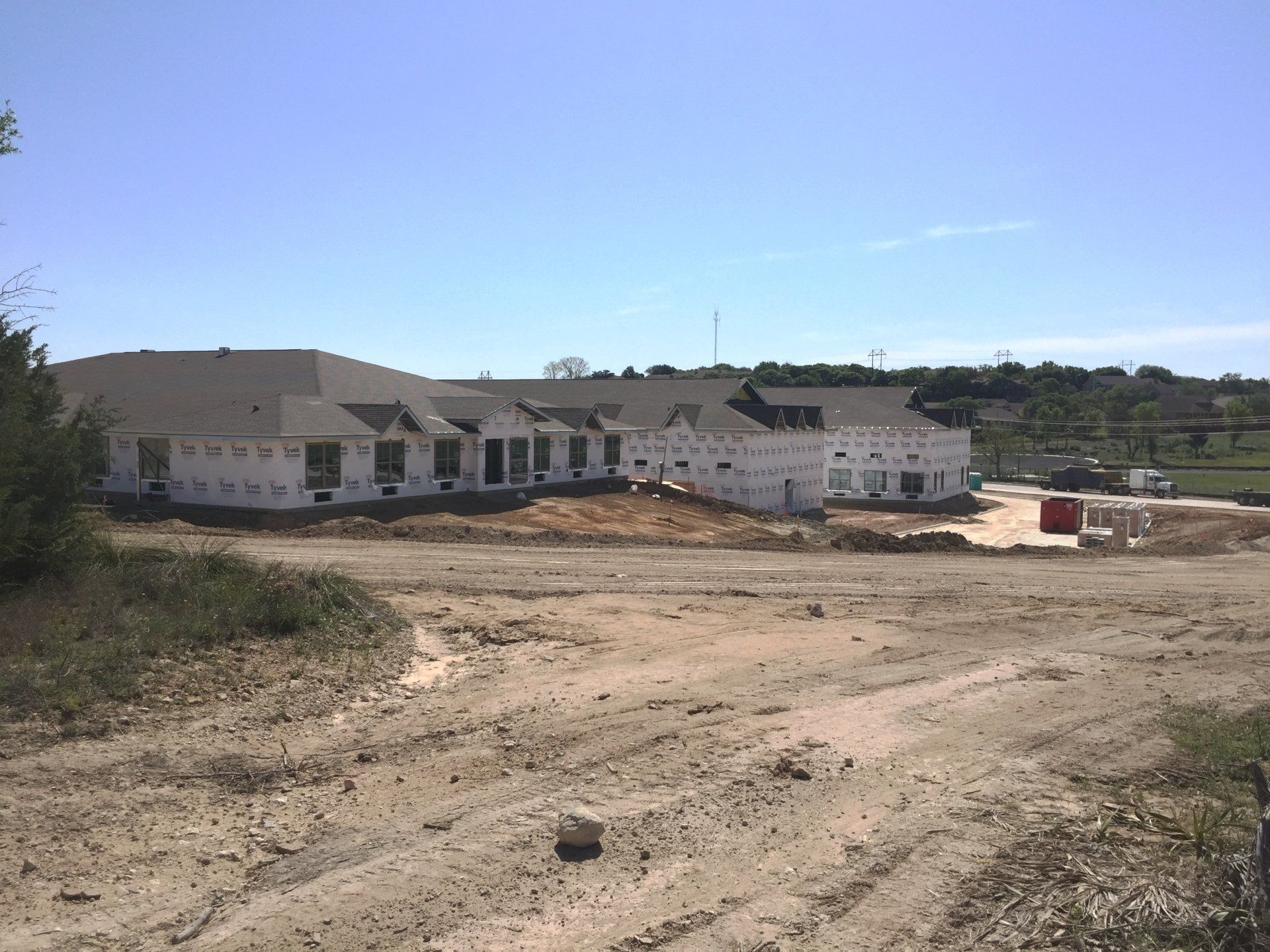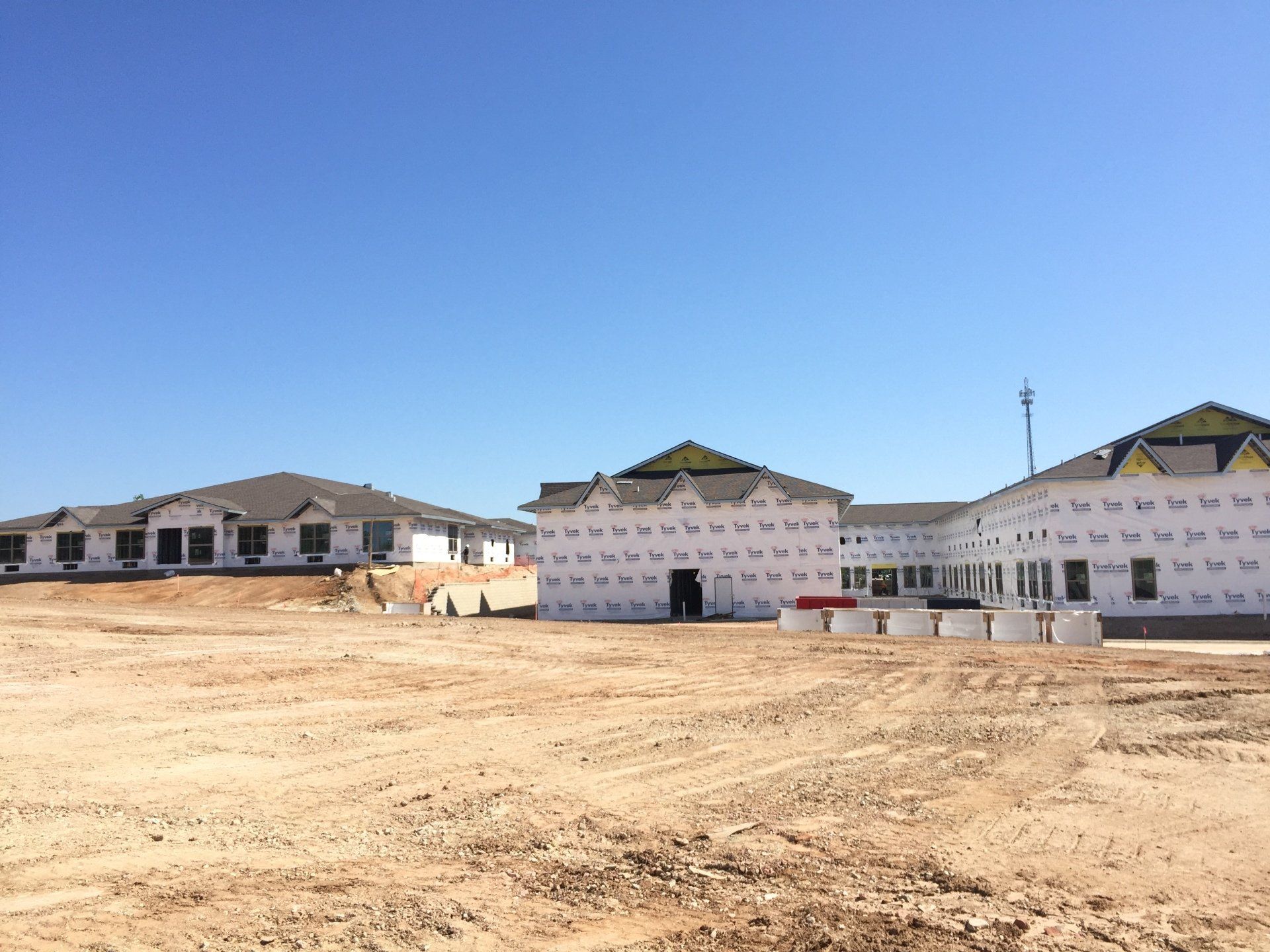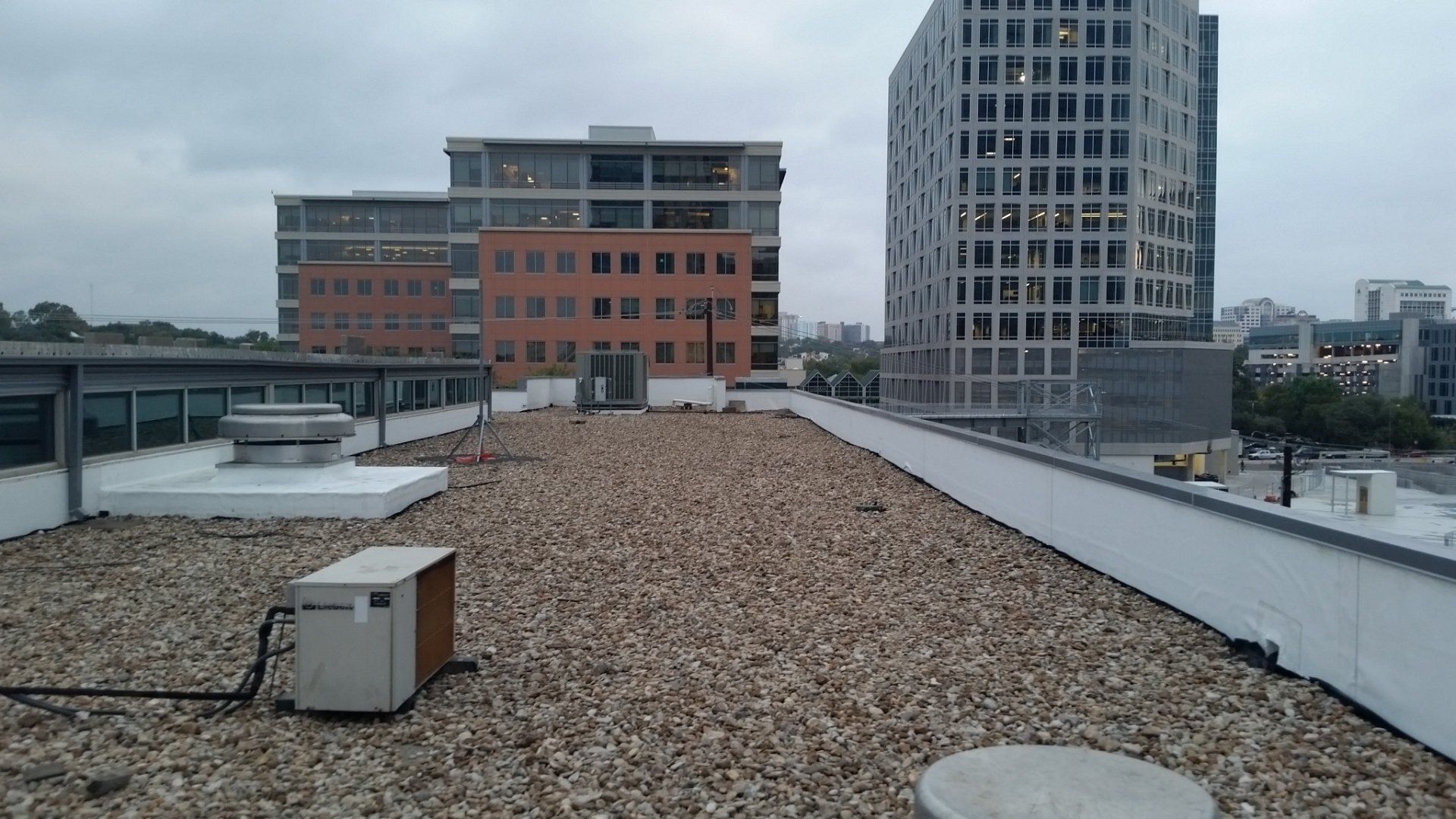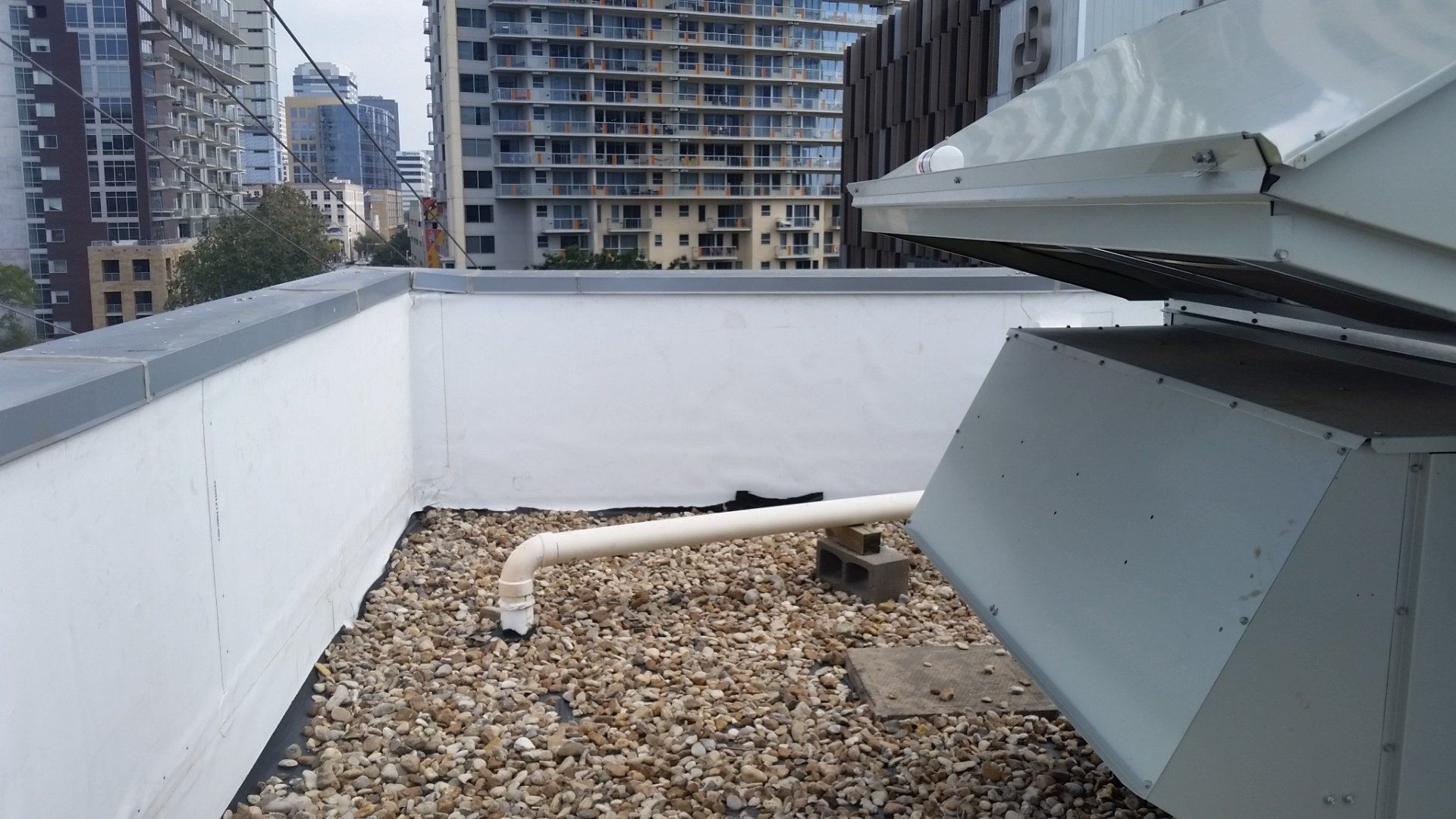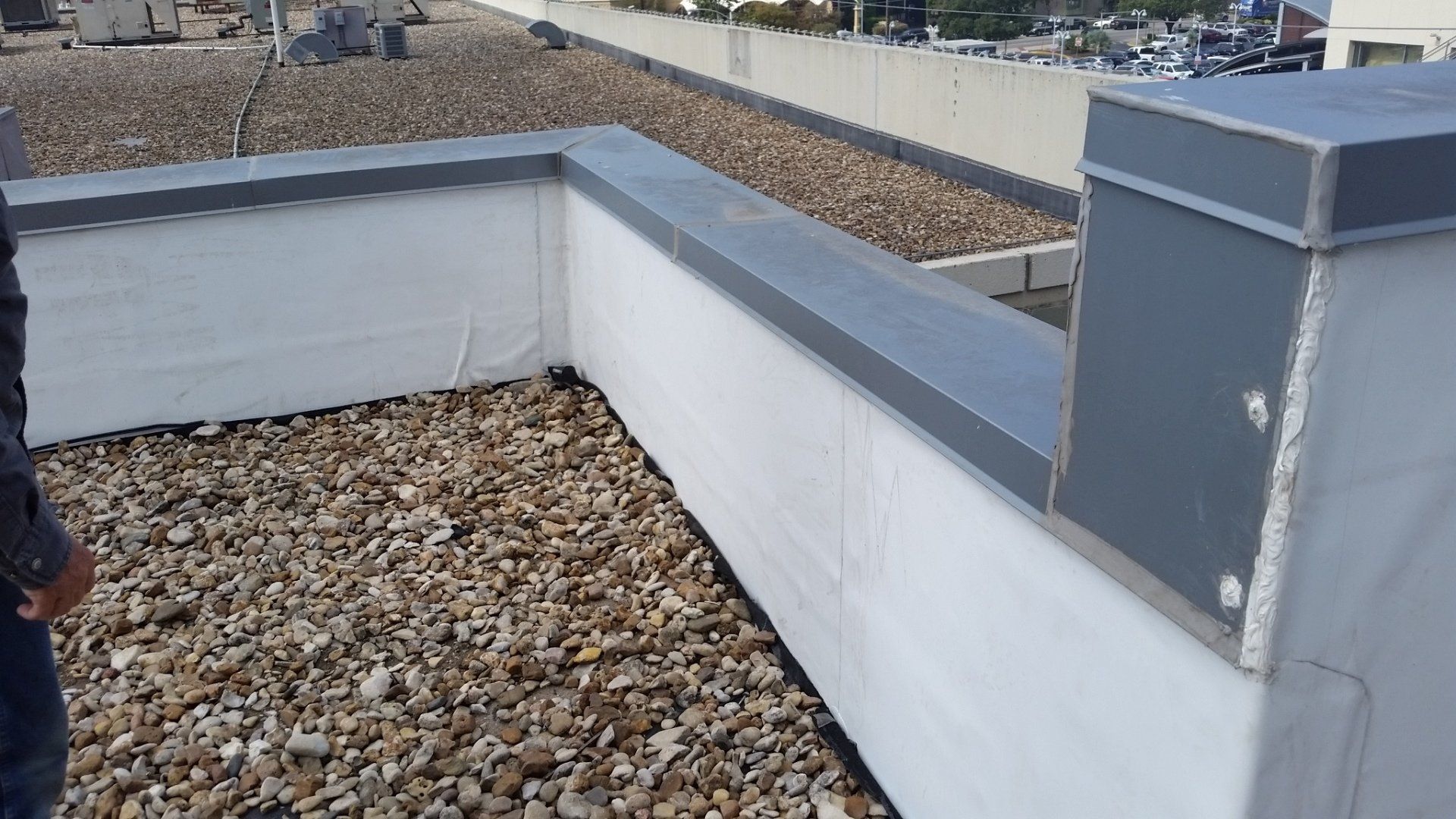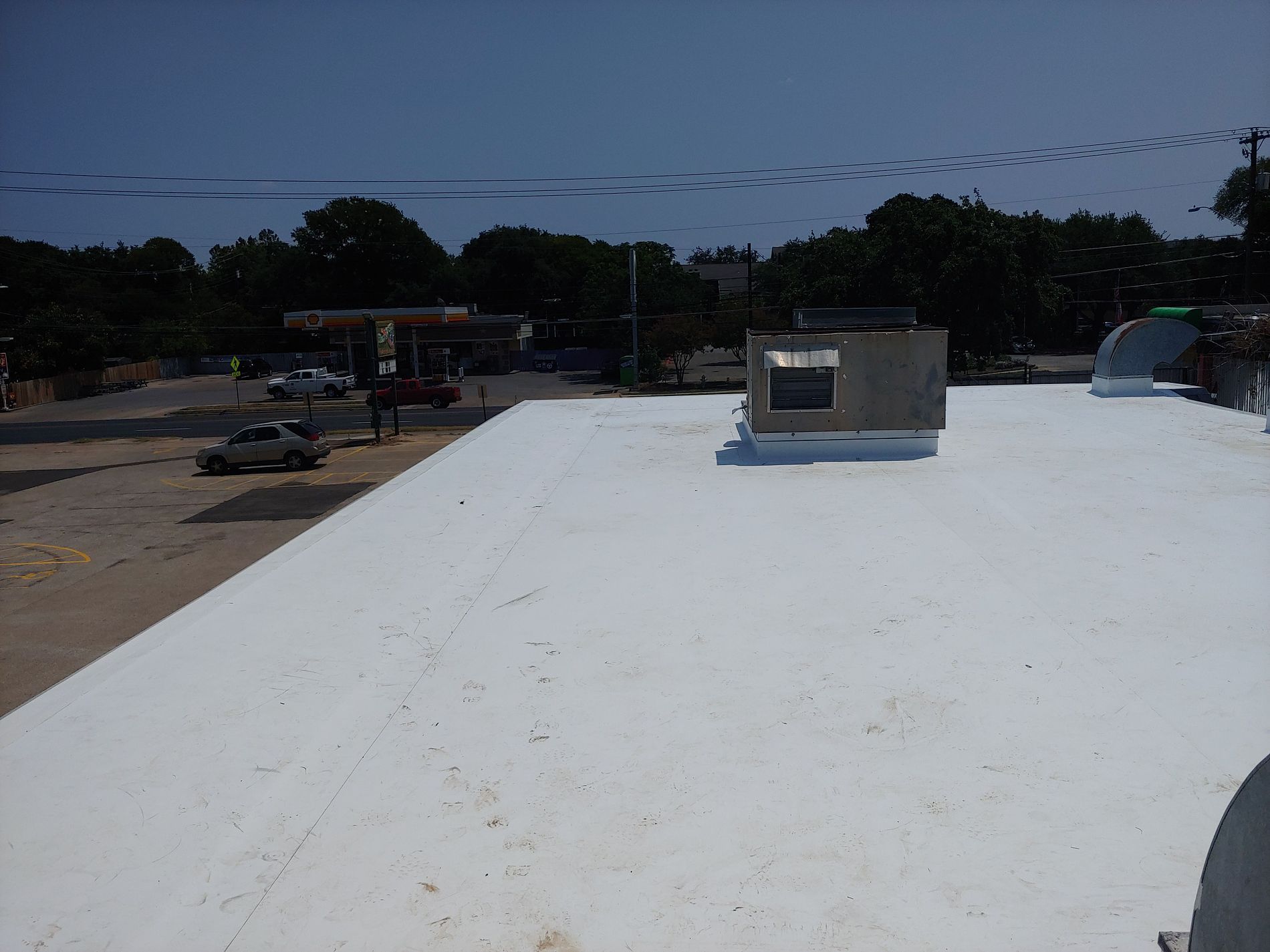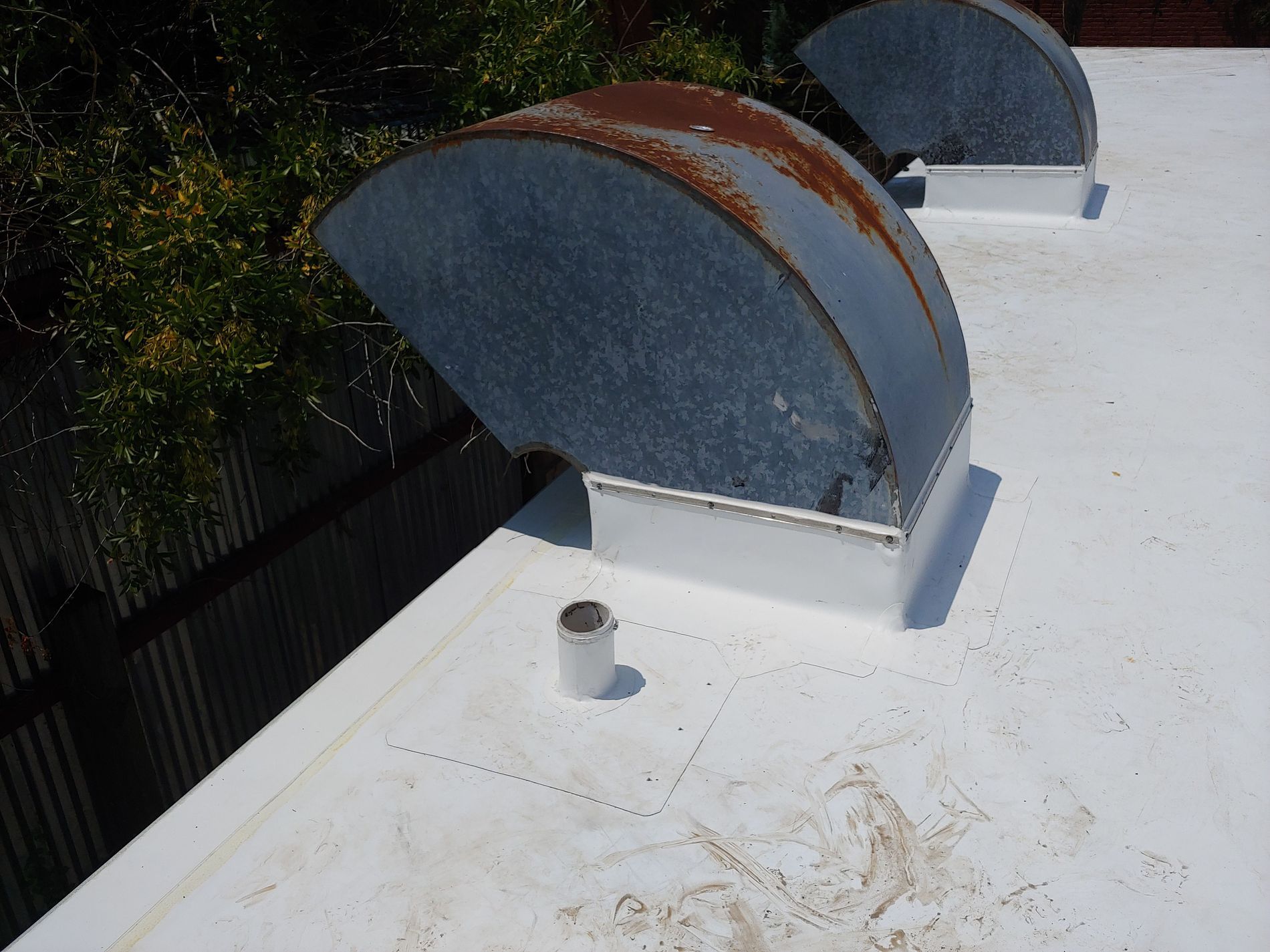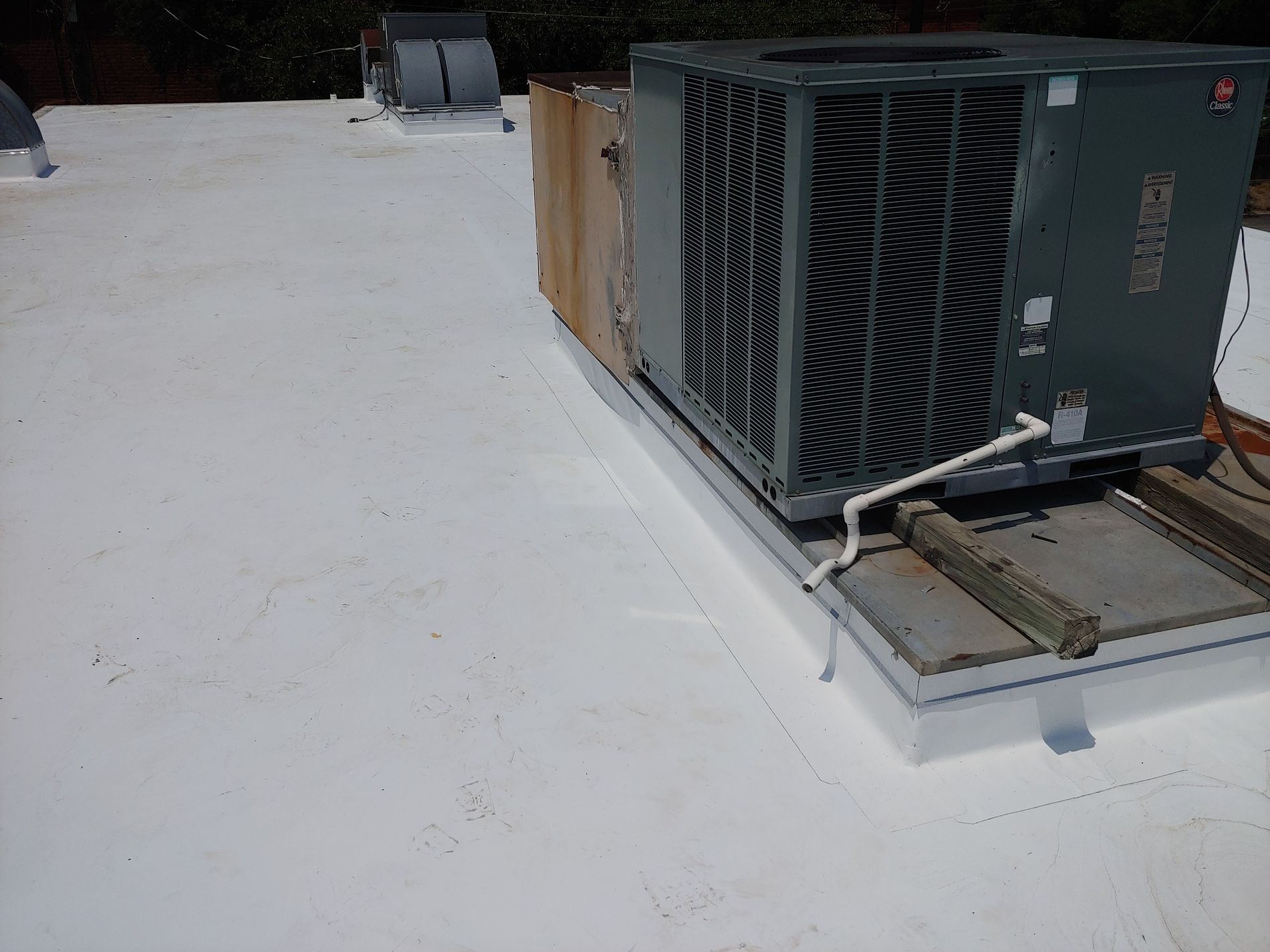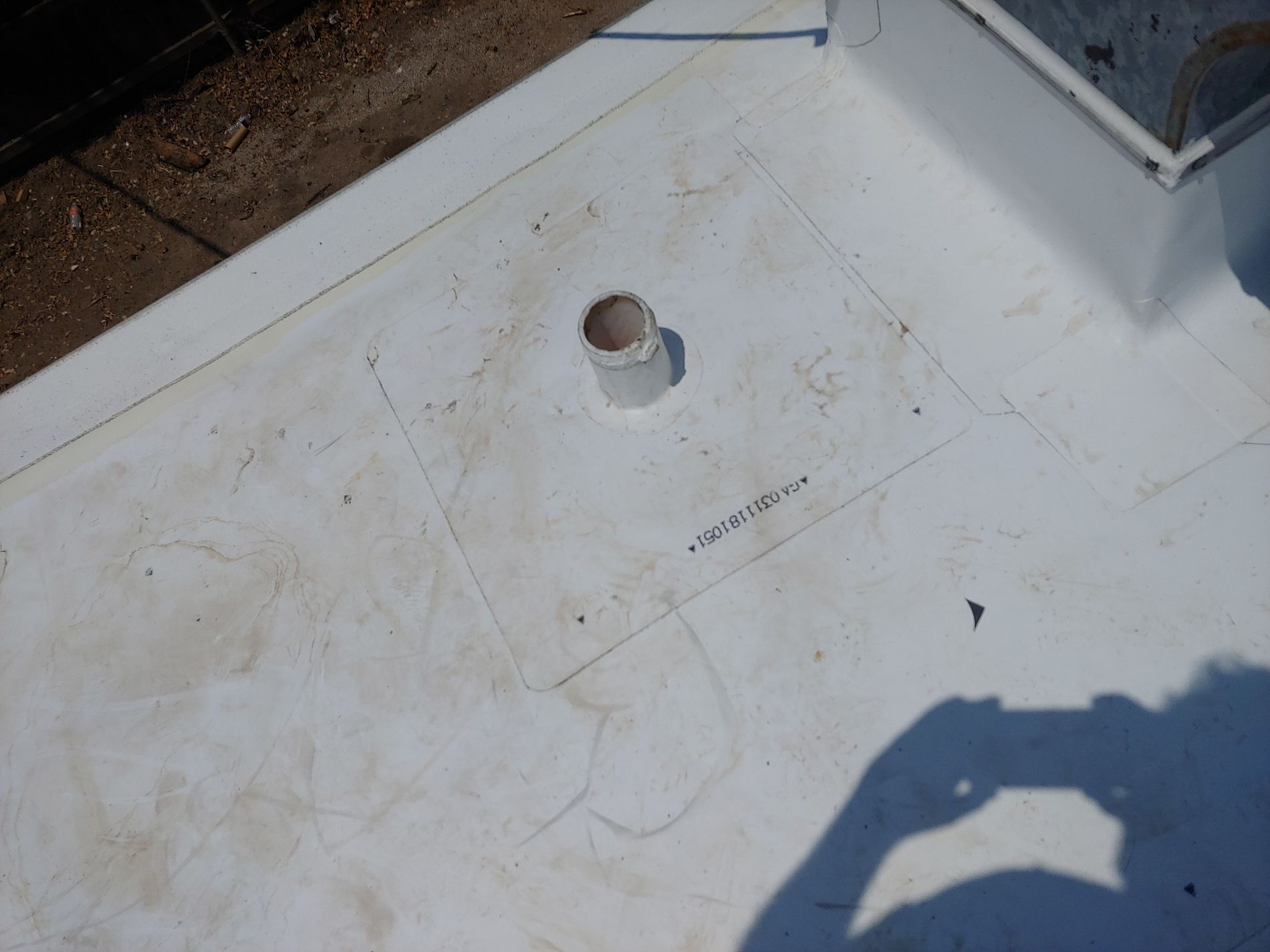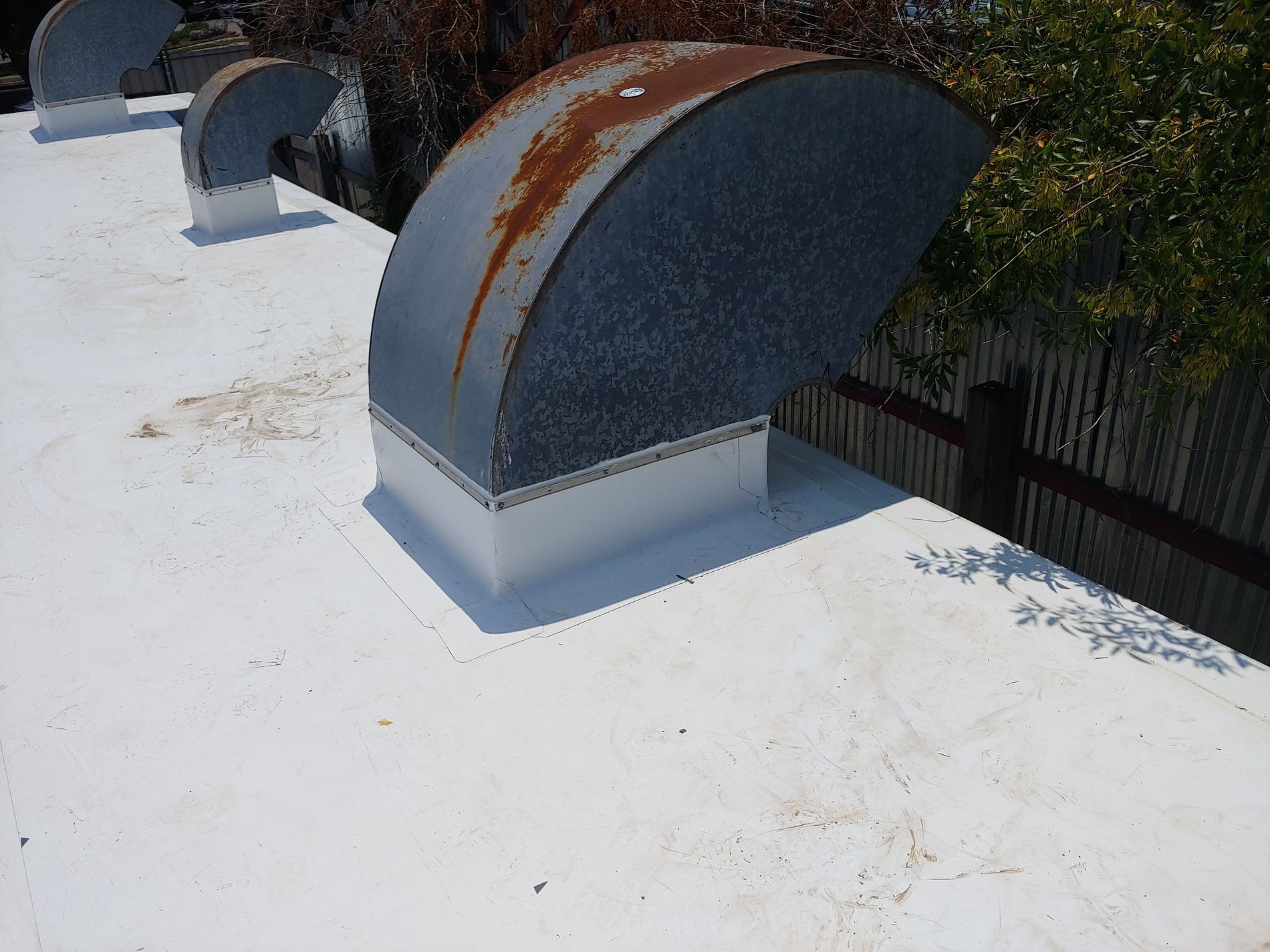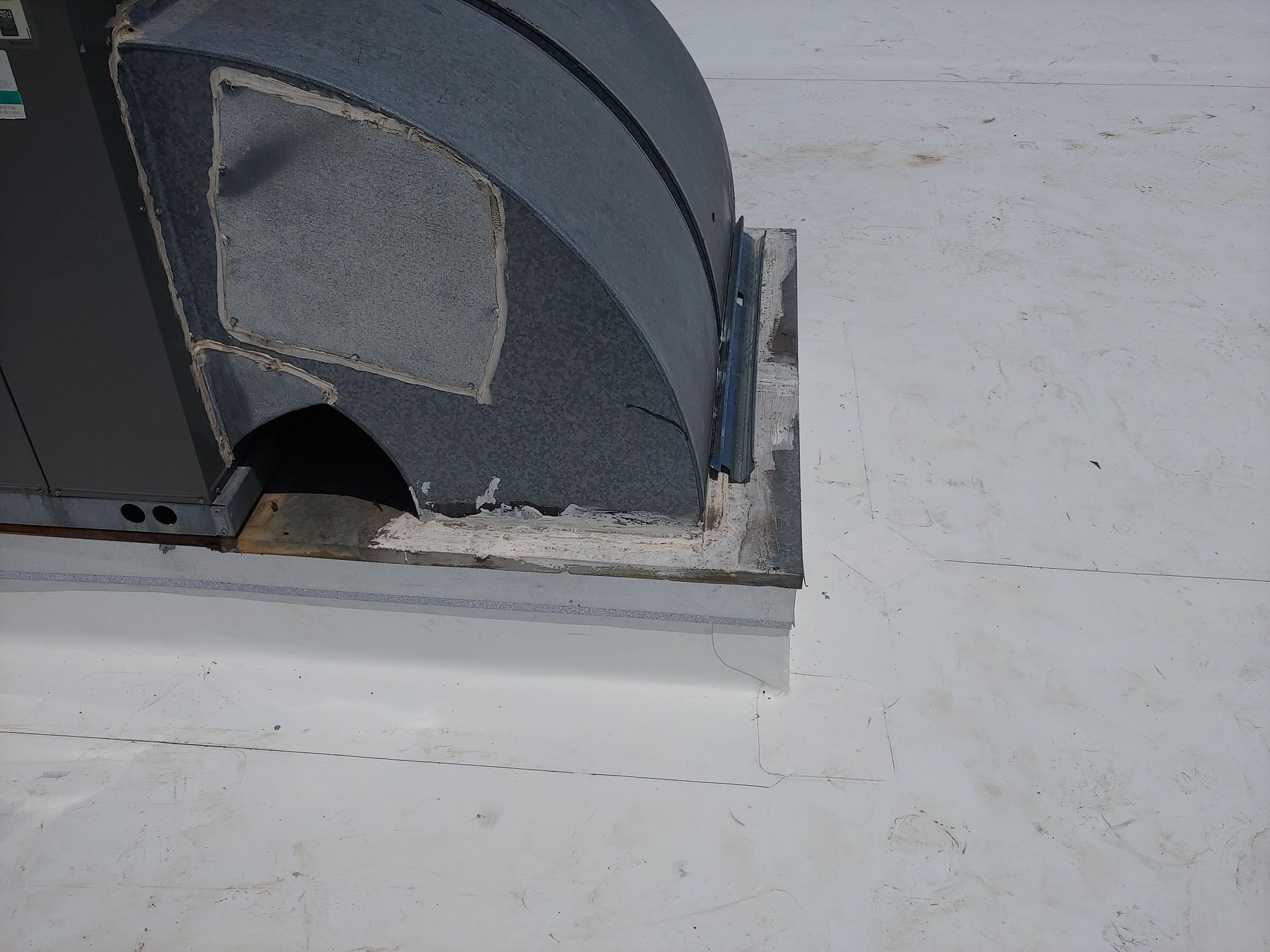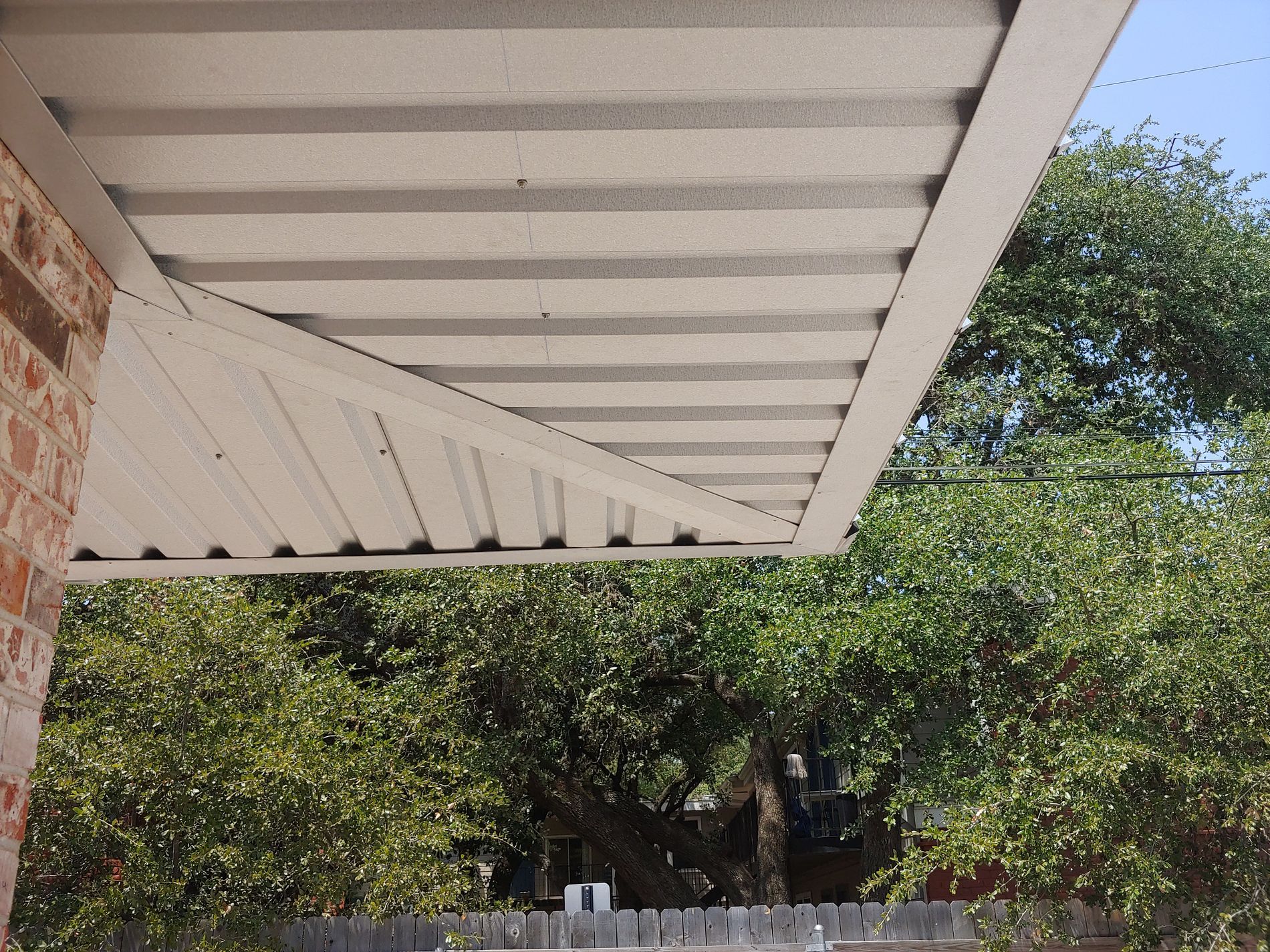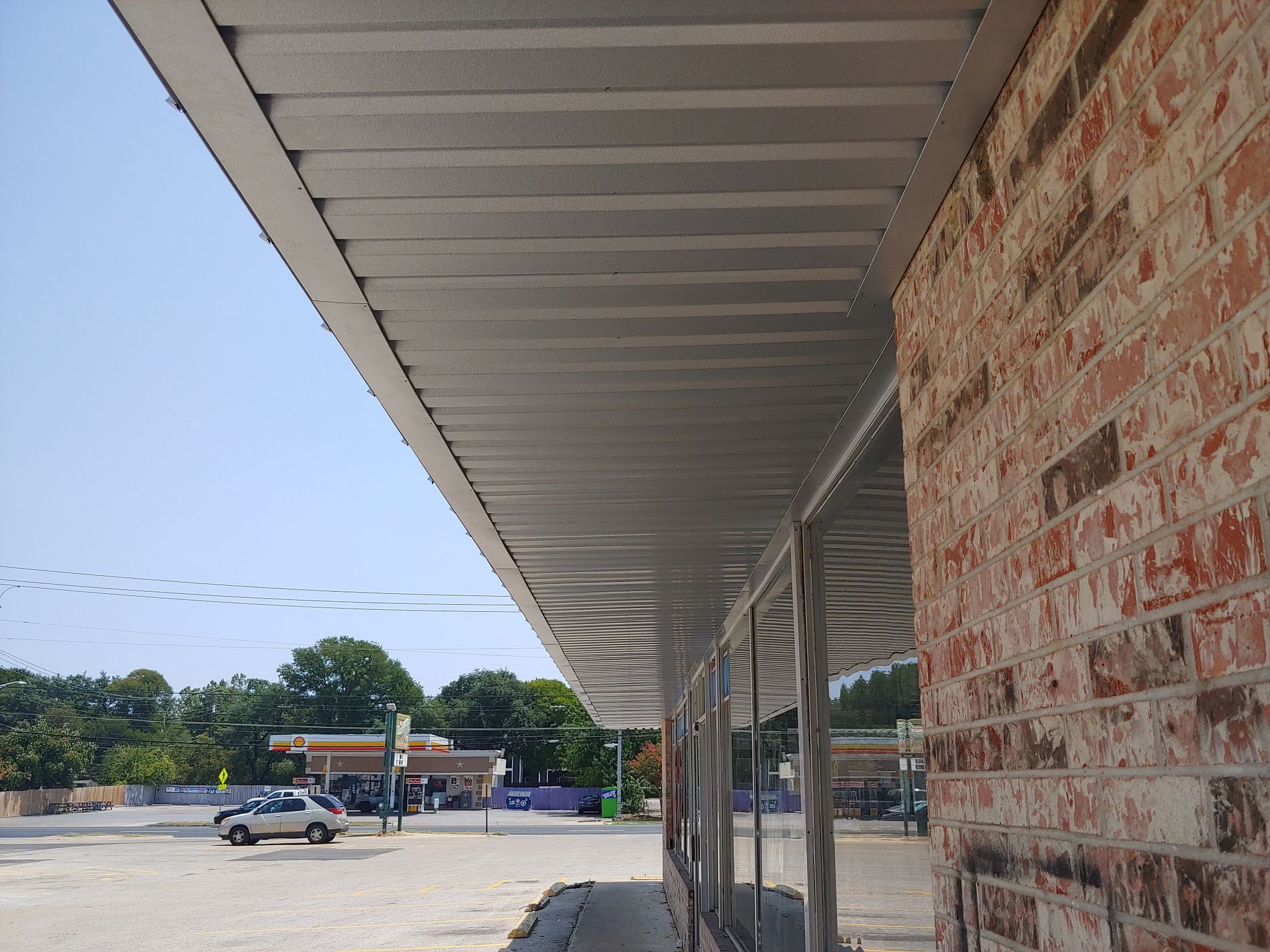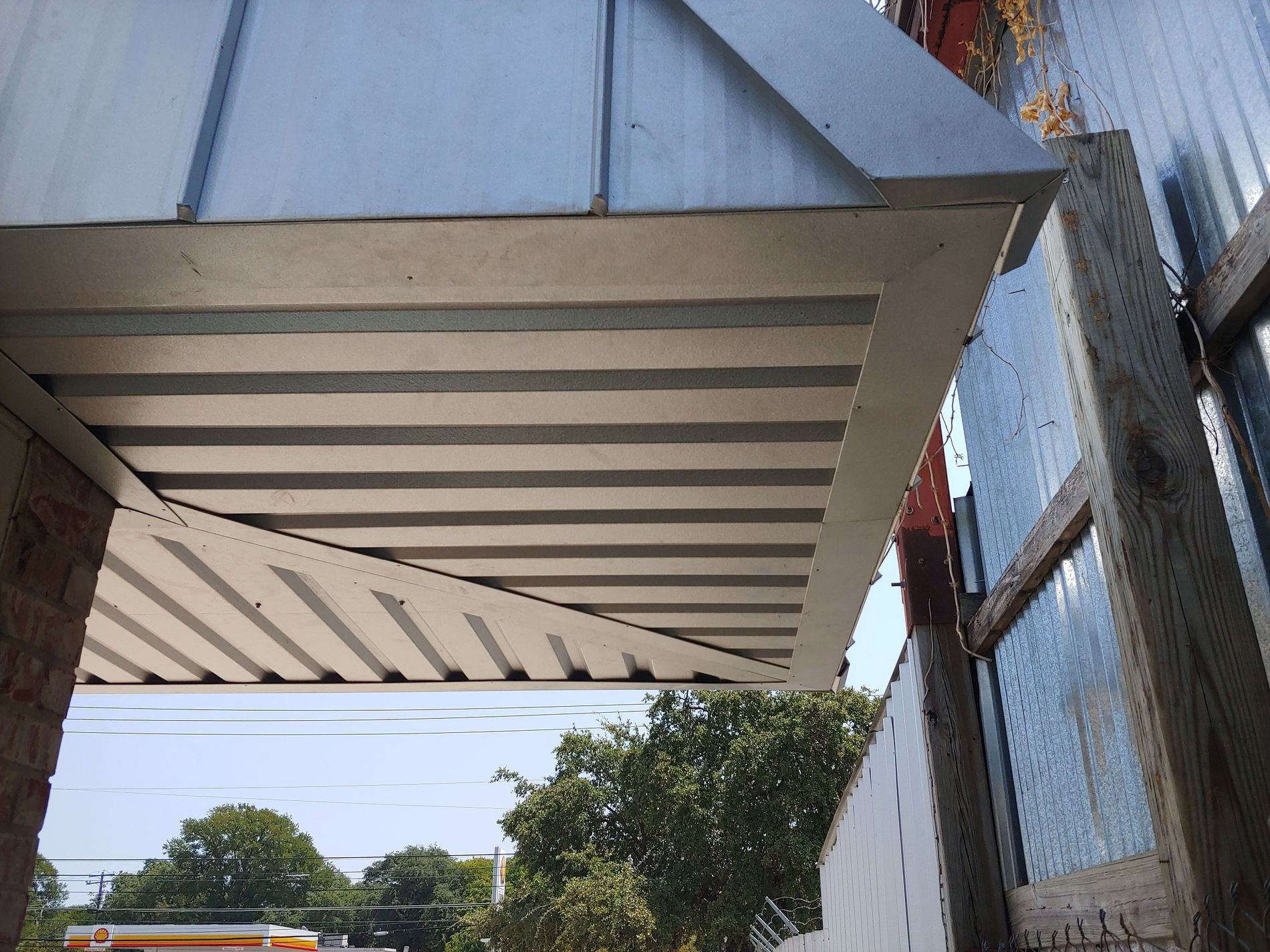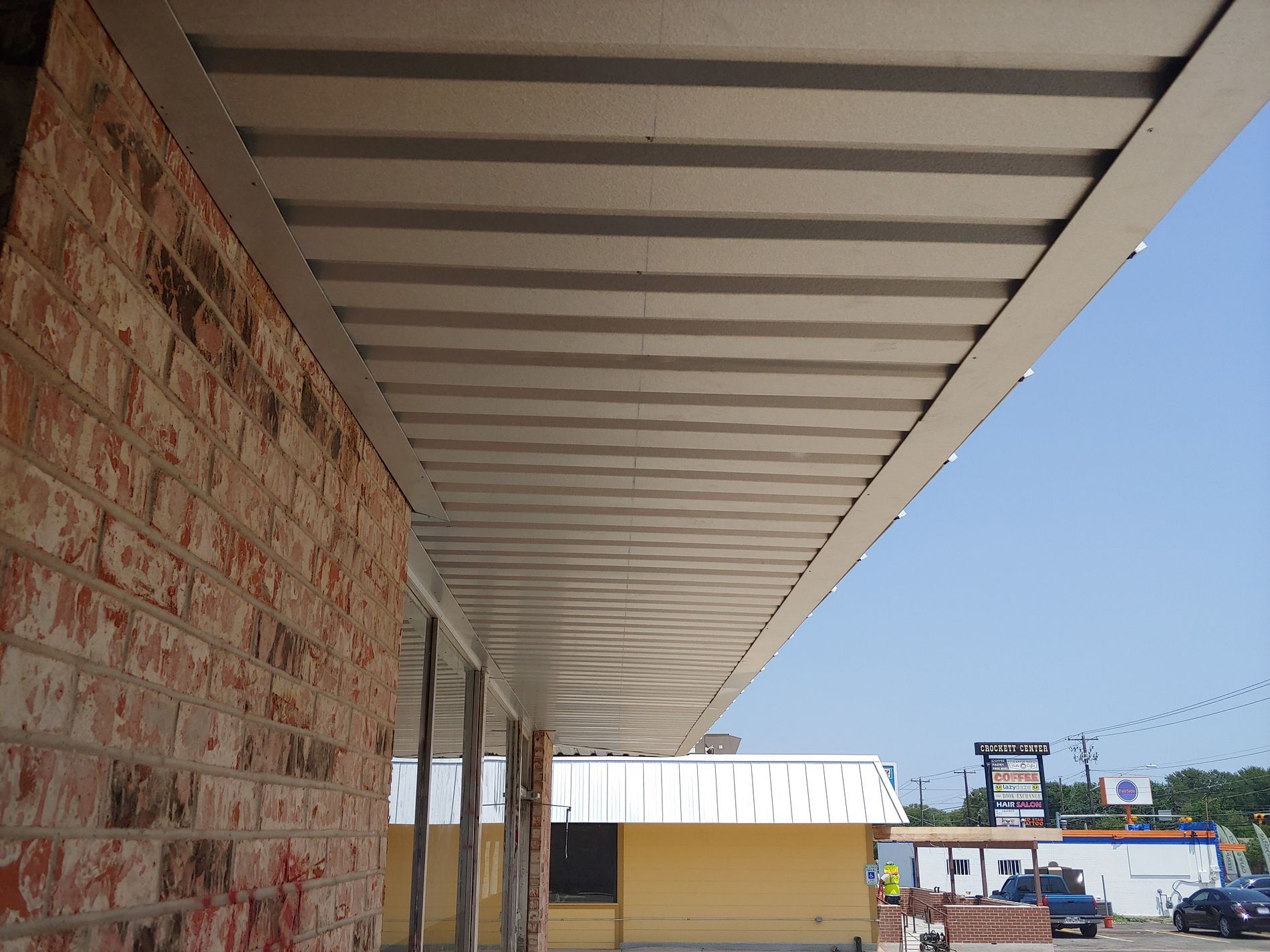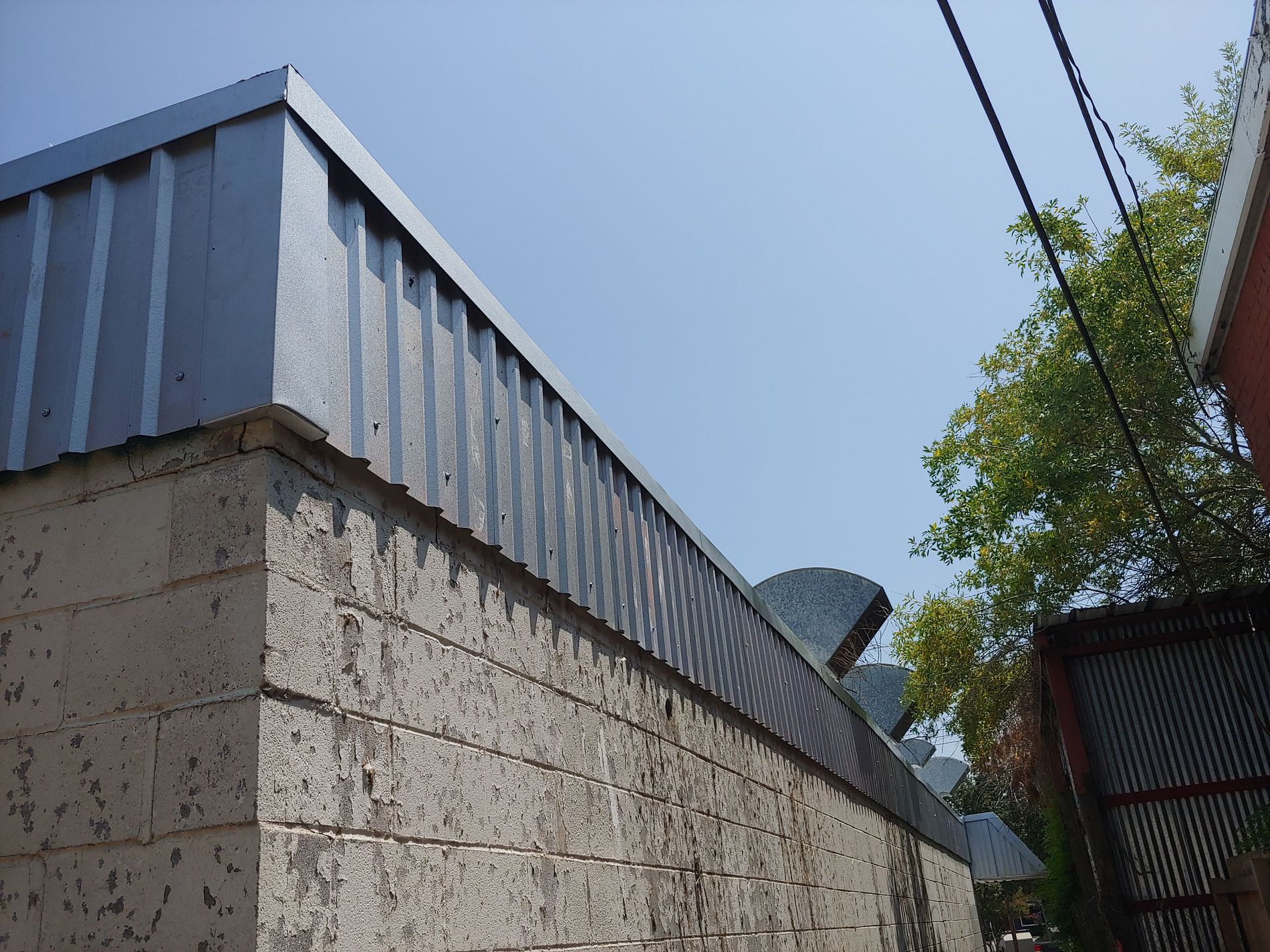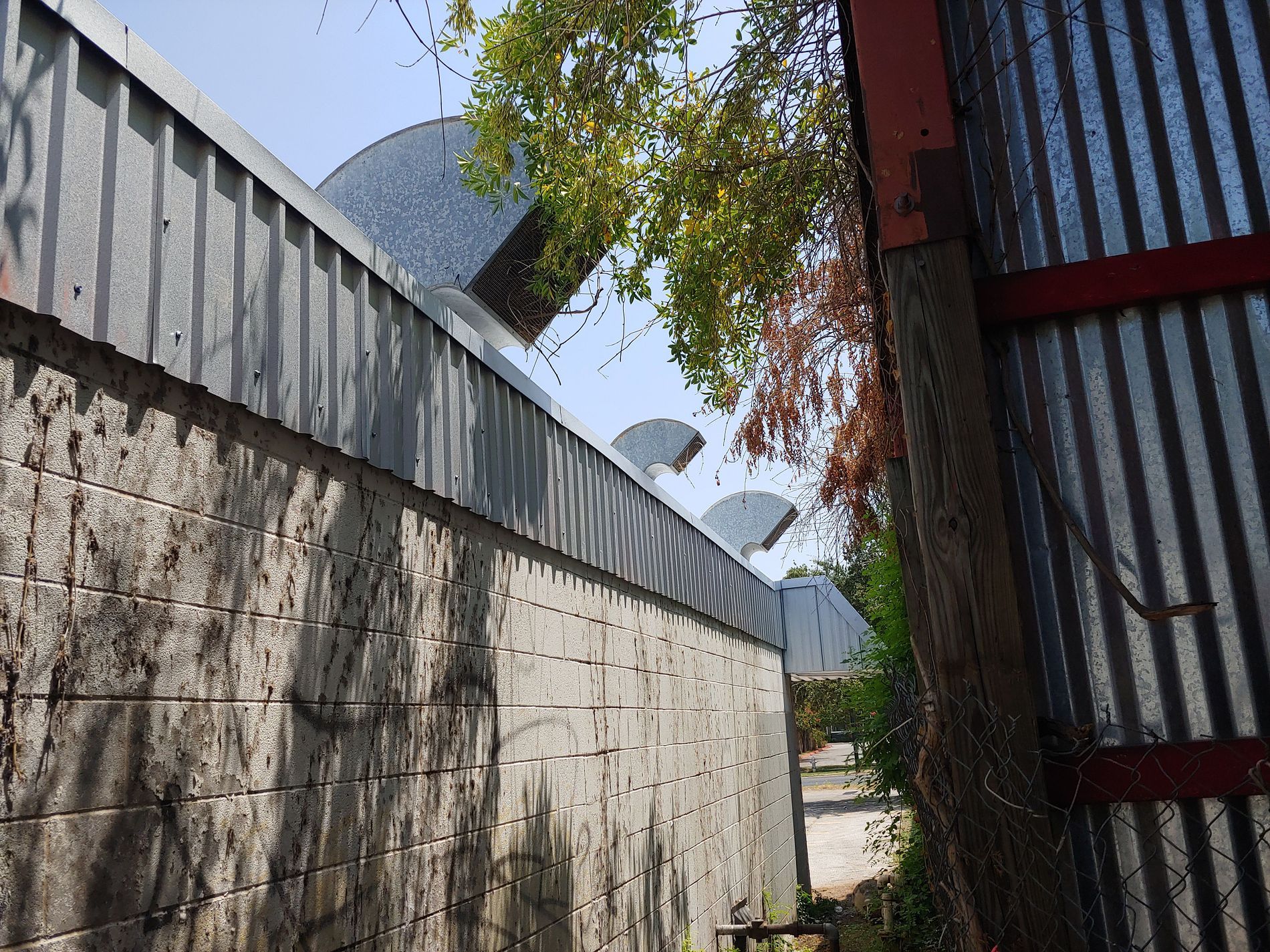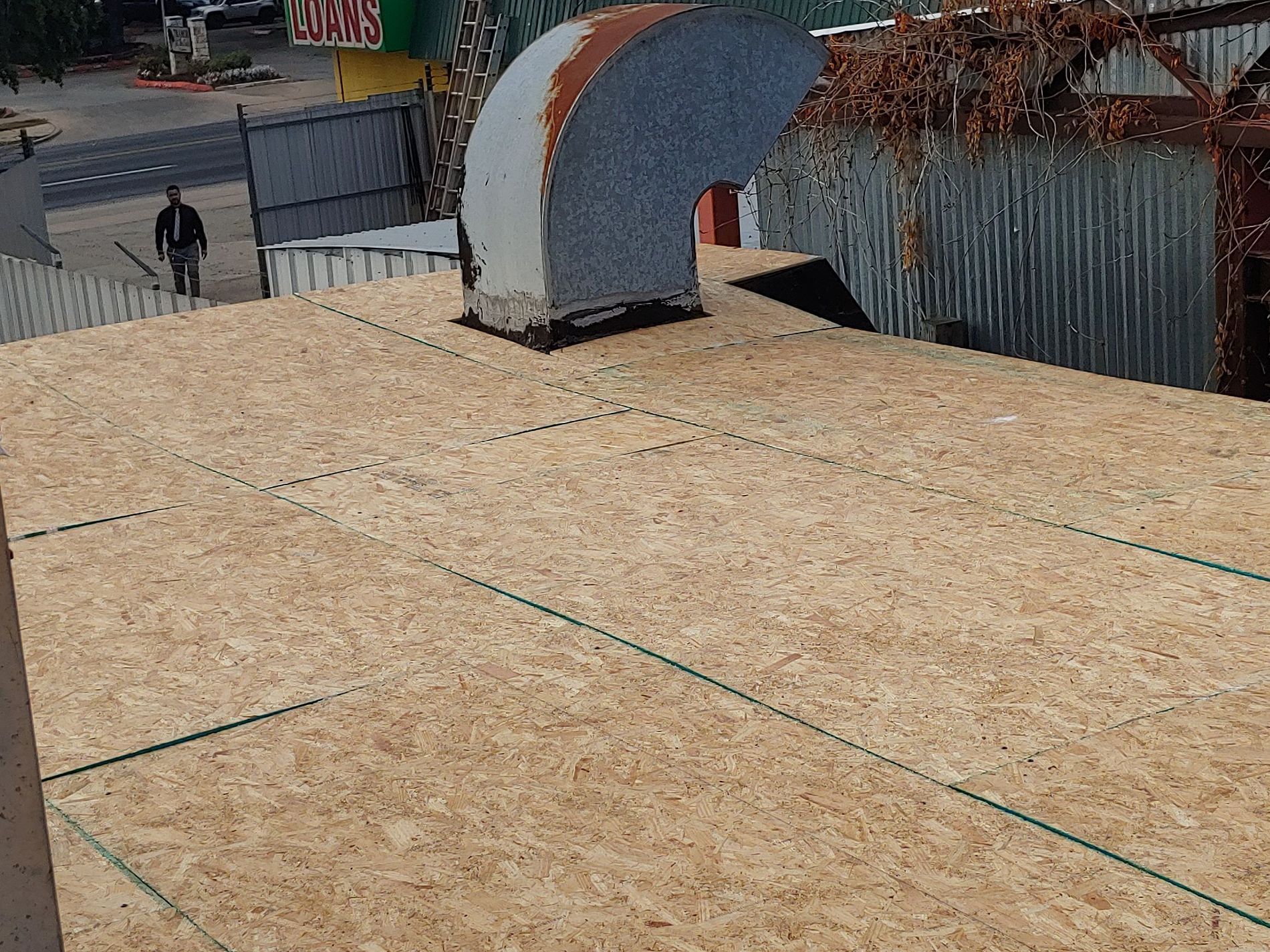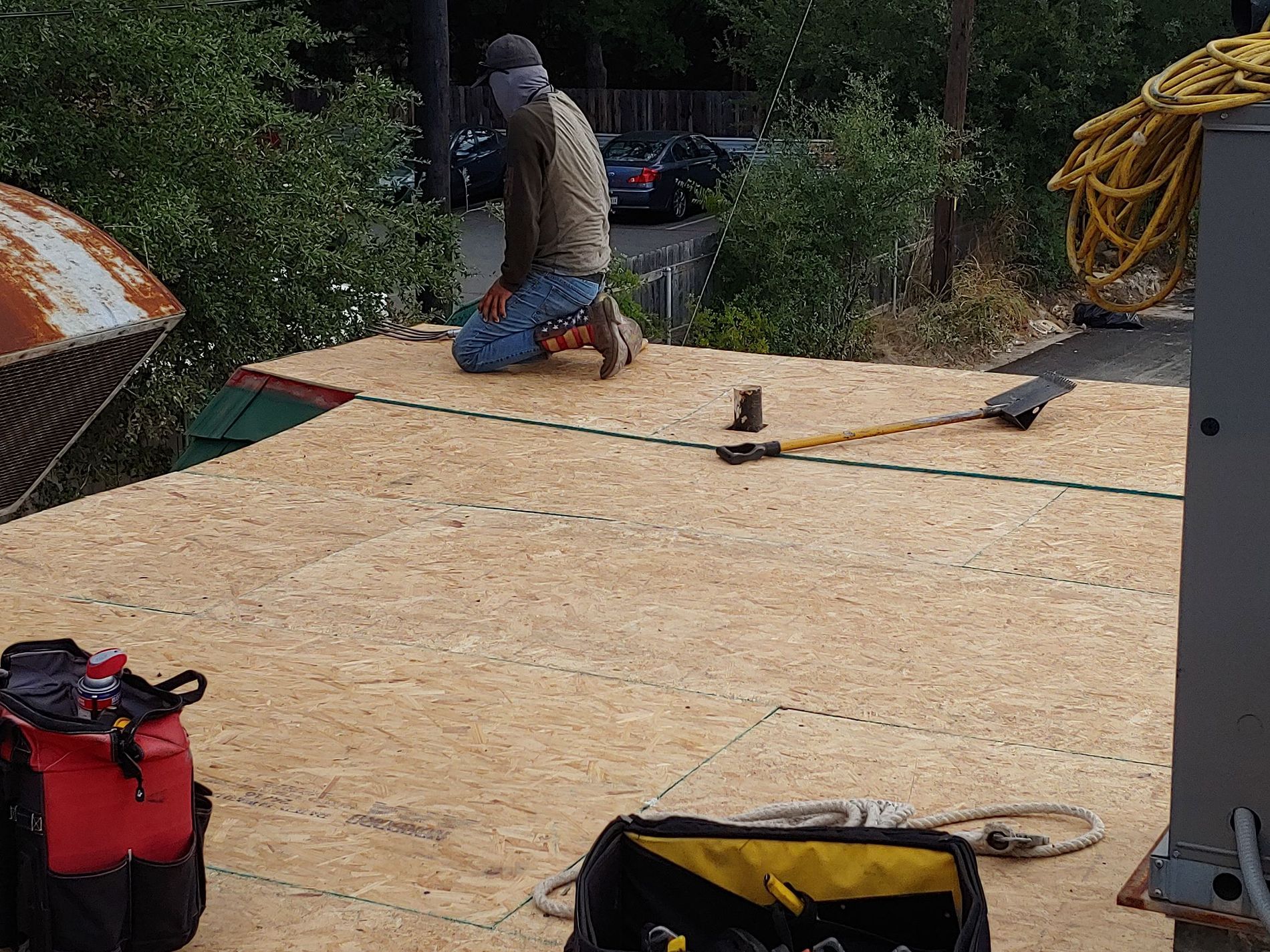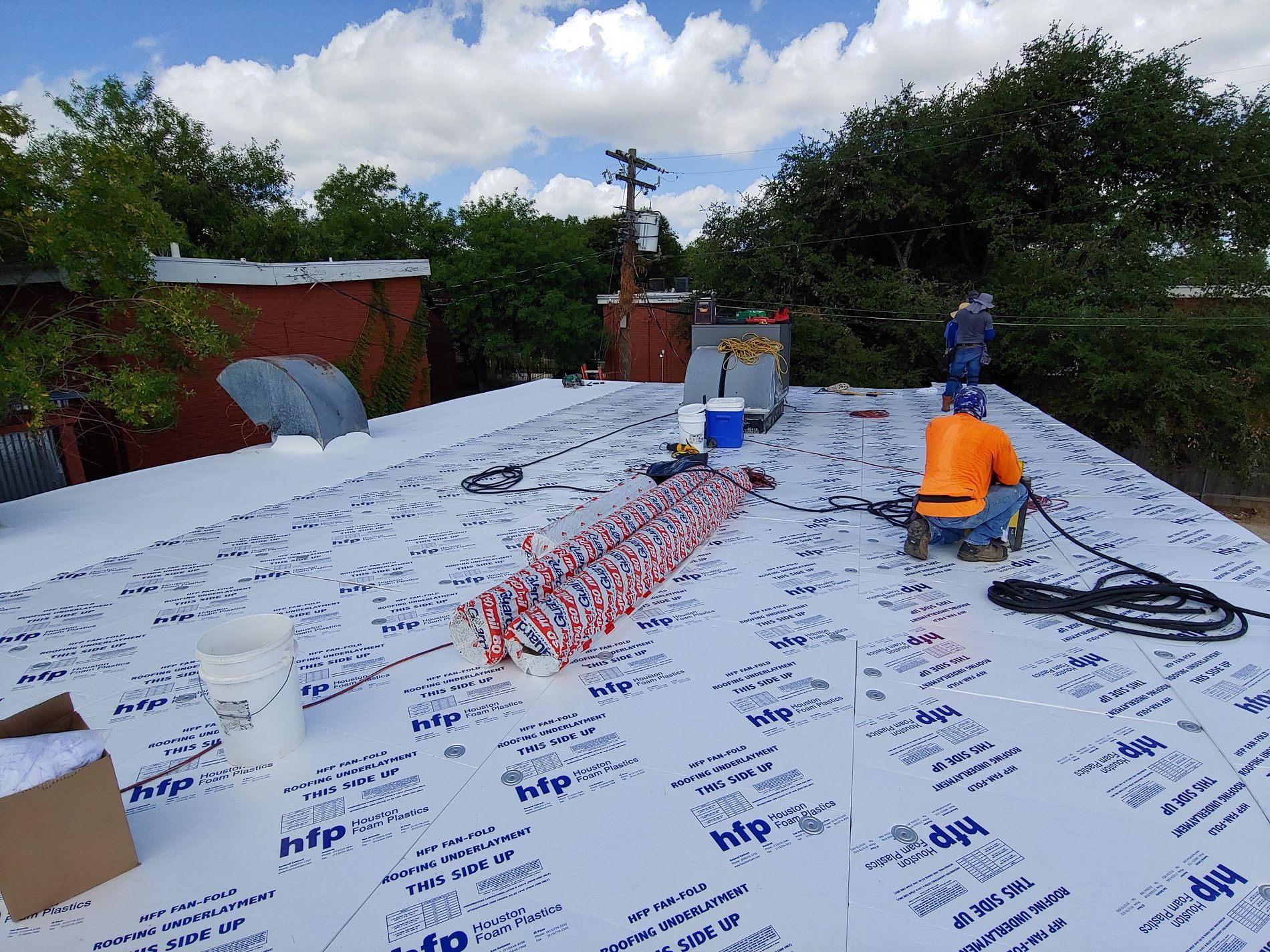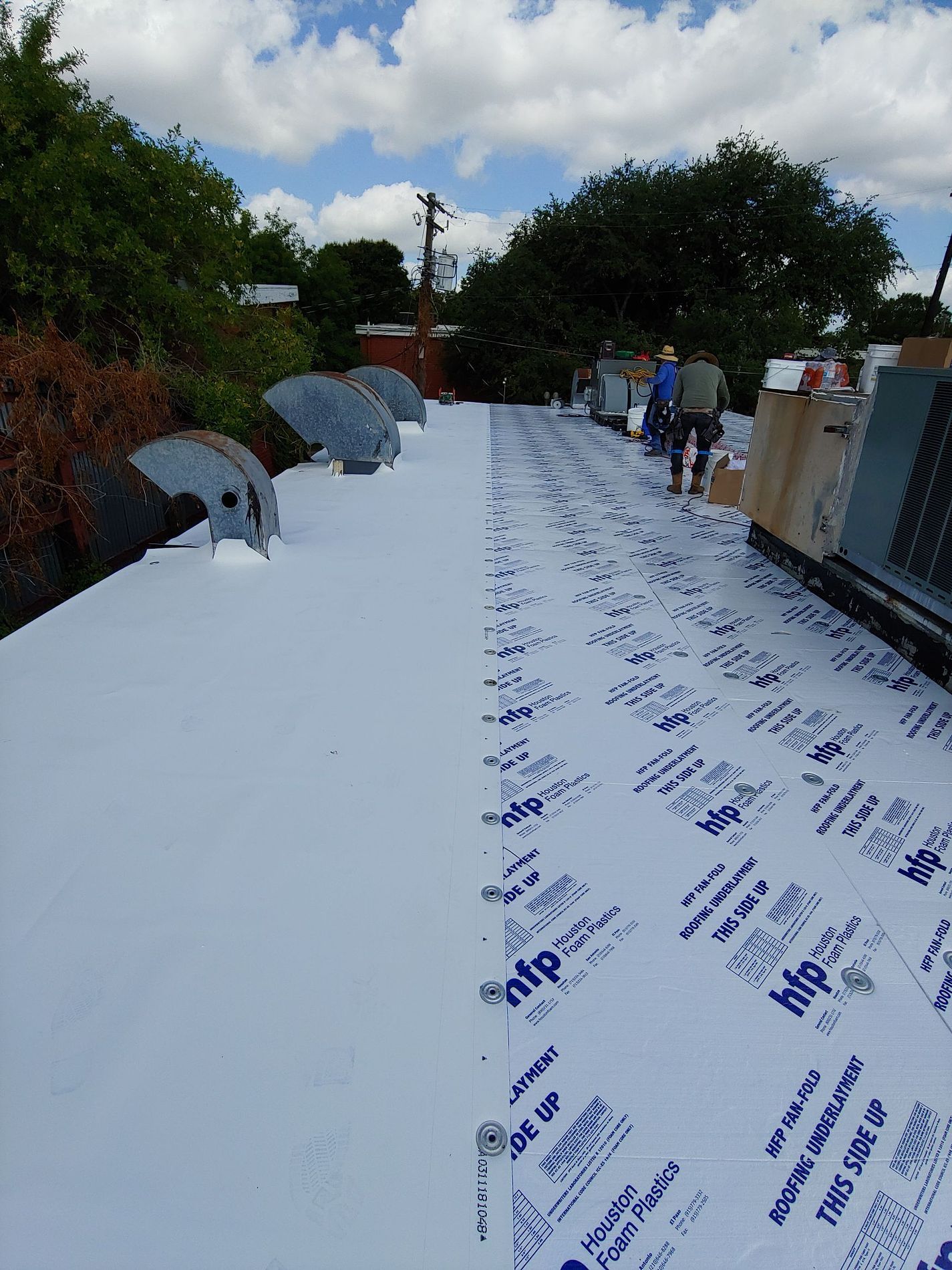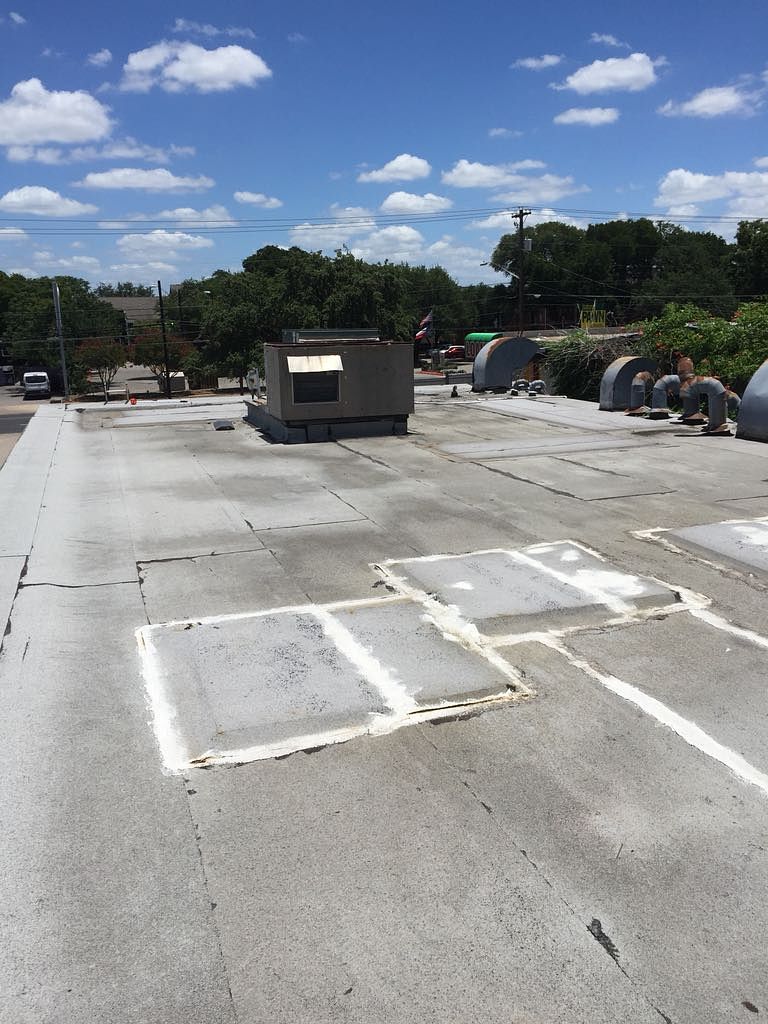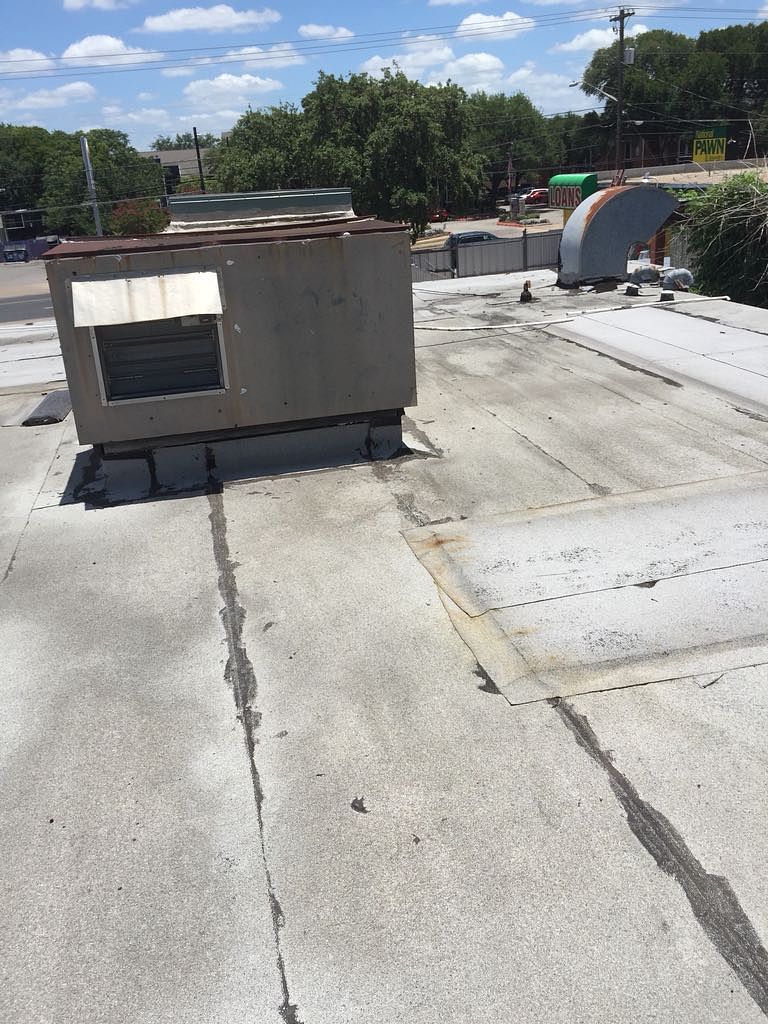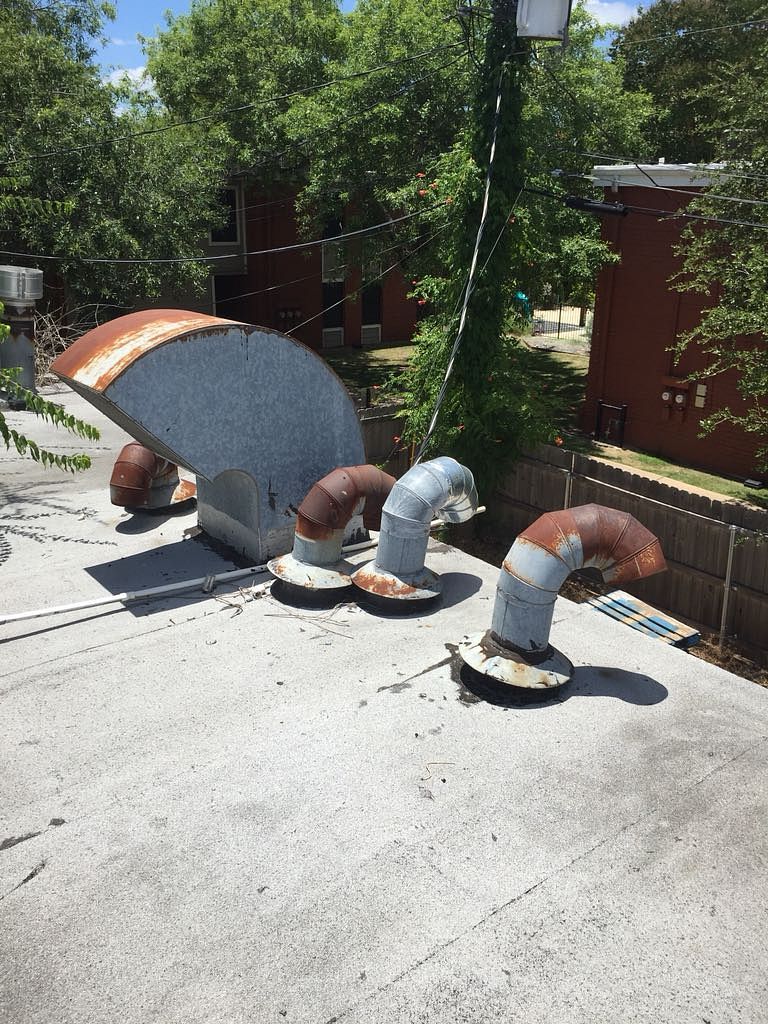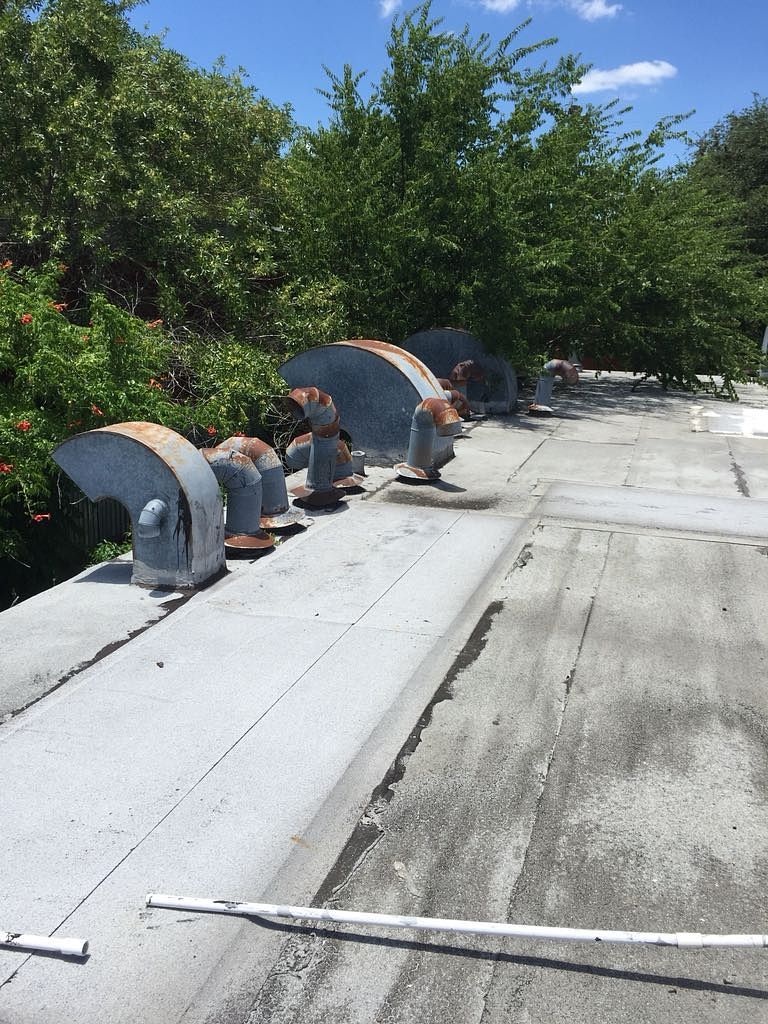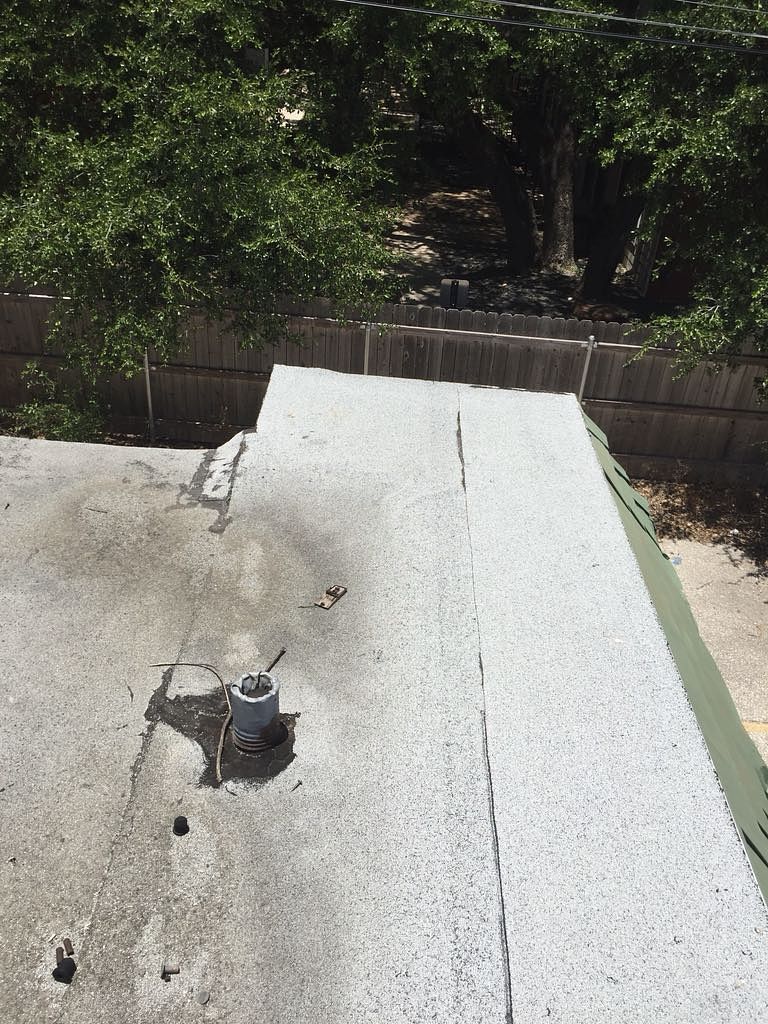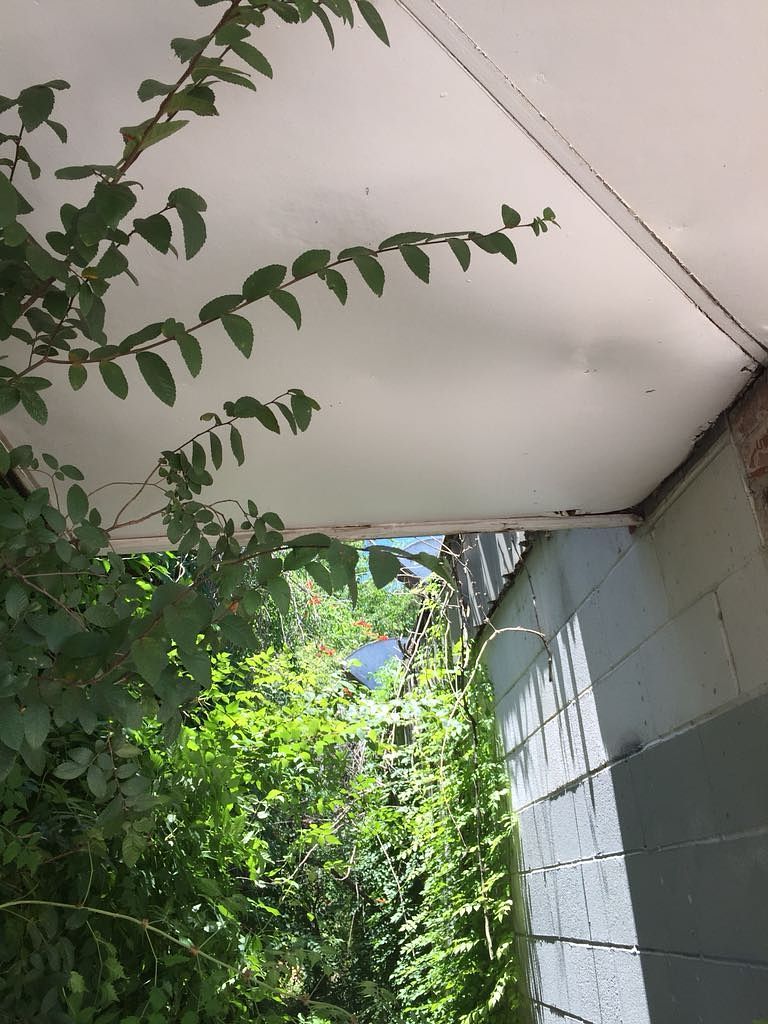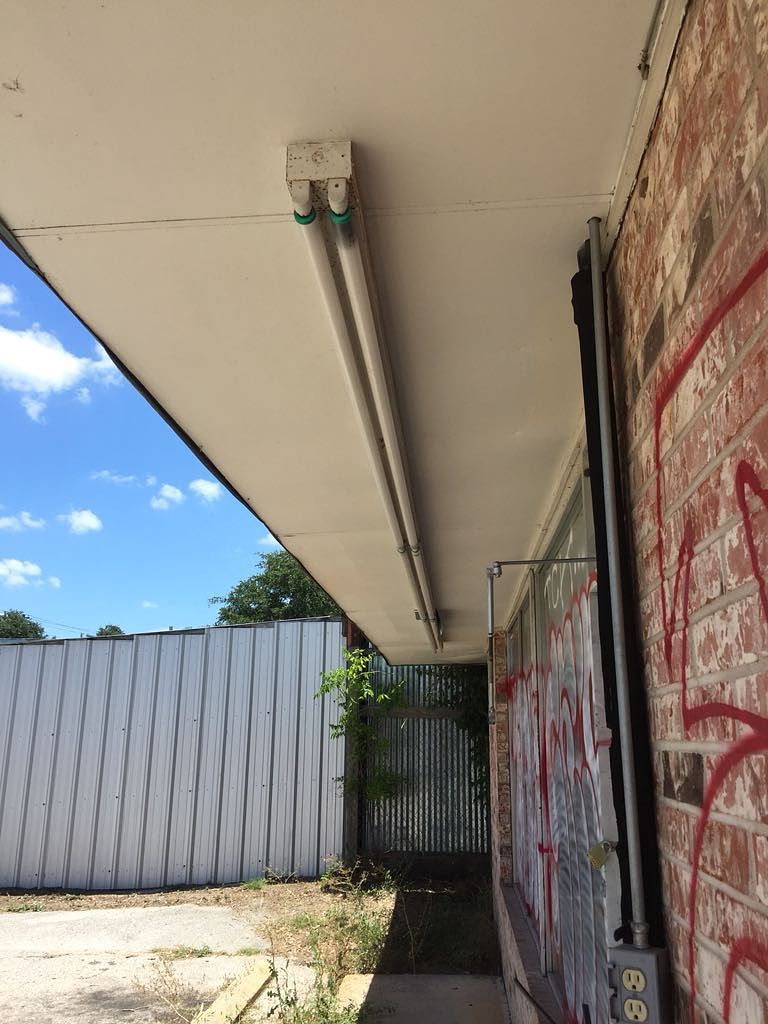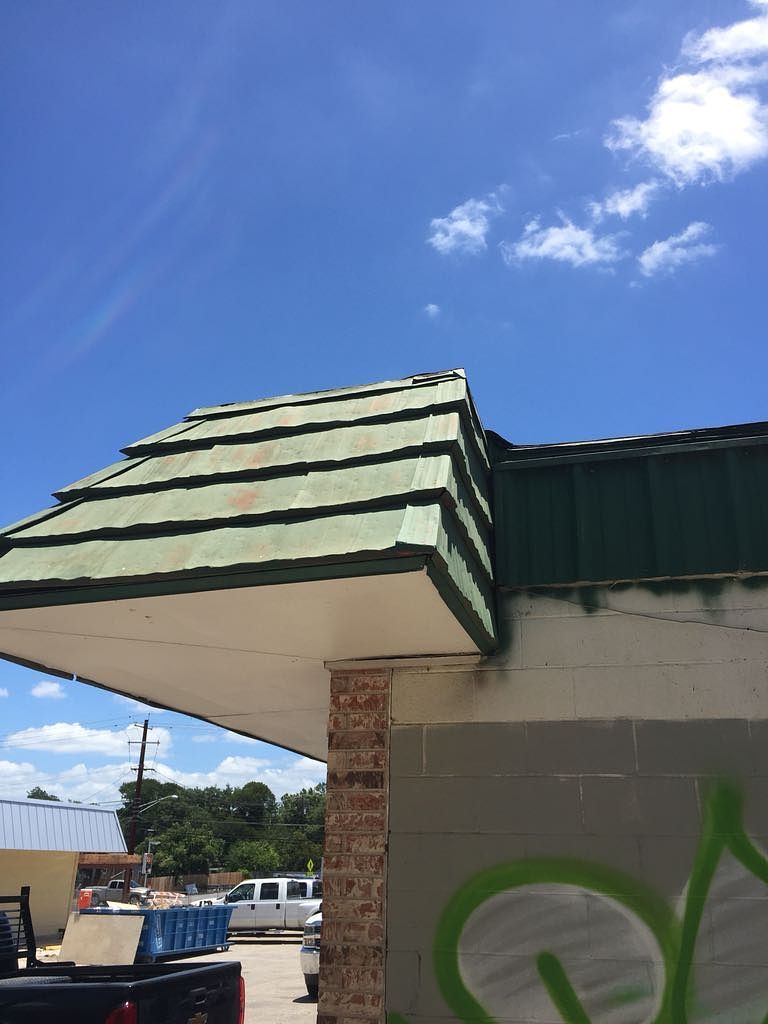Why Choose Austin Roofing?
Fast Bids!
As an Elite commercial roofing company in Austin,
we have the distinction of being able to offer premium
15, 20, 25 & 35-year Ndls on Single Ply.
NDLs on Coatings.
Austin Roofing has a long standing reputation for
great customer service
and
outstanding installation quality.
we have a great deal of experience with replacements and repairs, so we are an easy choice for exceptional services at Affordable Rates.
GAF - certified on low slope TPO, Coatings, modified bitumen & shingles.
We can offer A 20 year NDL
JM Peak Advantage Contractor Program
APP Bituminous Membrane,
TPO Thermoplastic Membrane,
PVC Thermoplastic Membrane, EPDM Rubber Membrane & SBS Bituminous Membrane.
We Can Offer 5, 10, 15, 20, 25 & 30-Year NDL
How Can Businesses Ensure the Integrity and Maintenance of Their Commercial Roofs?
Maintaining the structural integrity of a commercial roof is crucial for the long-term protection of your business assets. Here’s how you can ensure your roof remains in optimal condition:
Regular Inspections
Schedule regular inspections by certified roof inspectors. Experts from reputable companies, such as Carlisle SynTec Systems or GAF, can detect potential issues early, preventing costly repairs.
Routine Maintenance
Implement a routine maintenance plan. This includes clearing debris, checking for water damage, and ensuring the drainage system is functioning correctly. Regular upkeep can extend the lifespan of your roof.
Quality Repairs
Use experienced professionals for any necessary repairs. Look for contractors with accreditations from respected associations like the National Roofing Contractors Association (NRCA). This ensures that repairs are done to the highest standards.
High-Quality Materials
Invest in high-quality roofing materials from trusted brands such as Firestone Building Products or Owens Corning. Durable materials offer better protection against environmental factors, reducing the likelihood of damage.
Stay Informed on Warranties
Be aware of the warranty conditions provided by your roofing materials' manufacturer. Understanding what’s covered can save time and money in case of product failure.
By following these strategies, businesses can ensure their commercial roofs remain in top condition, safeguarding their investments and operations.
Why Local Weather Conditions Matter for Your Commercial Roof
When designing a commercial roof, understanding local weather conditions is crucial for long-term success and durability. Designing without considering the climate could lead to costly repairs or replacements as your roof struggles to withstand the local elements.
Impact of Climate
Every geographical area has unique weather challenges that can significantly affect roof performance. For example:
Heavy Rain and Flooding: In flood-prone areas, roofs need to efficiently manage water accumulation to prevent leaks and structural damage.
Extremely Hot Climates: Areas with high temperatures require roofing materials that resist heat and reflect sunlight to maintain interior comfort and energy efficiency.
Wind and Hail: High winds and hail can damage certain roofing materials, so it's important to choose a material that can withstand these forces without compromising the roof's integrity.
Comfort and Productivity
Beyond durability, consider how weather influences the comfort of building occupants. Areas experiencing frequent heavy rain should avoid roofing materials that amplify noise, ensuring a peaceful environment for employees and customers. For office buildings, this consideration can directly correlate to productivity levels and customer satisfaction.
Cost Efficiency
By addressing these local weather factors during the planning phase, you can avoid expensive retrofits down the line. Investing in the right materials and design from the get-go mitigates the risk of water damage, excessive heat absorption, and premature wear, ultimately saving money while ensuring your building is safeguarded against the elements.
In summary, tailoring your commercial roof design to local weather intricacies is not just a recommendation—it's essential for maintaining structural integrity, enhancing employee comfort, and ensuring your investment stands the test of time.
How Does the Use of a Commercial Property Influence the Choice of Roofing Material?
Choosing the right roofing material for a commercial property is heavily influenced by the property's intended use. Different environments demand specific roofing features to ensure functionality and comfort.
Office Buildings: If your property is an office building bustling with employees, the roofing choice should prioritize noise reduction. A quiet environment is essential for productivity, especially during inclement weather. Opt for materials that offer sound insulation, like rubber or modified bitumen, to help keep the building serene.
Warehouses: For spaces storing heavy equipment, durability and load-bearing capacity will be crucial. Metal roofing provides the strength needed to withstand the heavy demands of such facilities. Additionally, consider materials that can handle stress from possible impacts, such as reinforced concrete panels.
Retail Spaces: In a retail setting, aesthetics and energy efficiency might take precedence. A visually appealing roof can enhance your brand's image, so materials that offer a sleek finish, like standing seam metal or architectural shingles, might be ideal. Additionally, energy-efficient options can lower operational costs by maintaining a comfortable internal temperature.
Restaurants: For establishments requiring ventilation exhaust systems, the roofing material must withstand oil and smoke exposure. Consider materials resistant to corrosion and heat, such as aluminum or stainless steel roofing.
In conclusion, the specific use of a commercial property can profoundly influence its roofing material selection. Each type of business or operation will have distinct considerations that must be met to ensure the roof complements the building's primary function efficiently.
Key Considerations When Installing a Commercial Roof
Purpose and Usage of the Building
The first factor to weigh is the function of your commercial building. Is it an active office space bustling with employees at their desks, or a spacious warehouse storing heavy machinery? This distinction matters because some roofing materials may generate more noise during rainfall, potentially disrupting productivity in office settings.
Local Climate Conditions
Given the varied and unpredictable weather patterns in areas like Texas, the local climate is a crucial consideration. You might face hailstorms, strong winds, scorching heat, and heavy rainfall—even all in a single day. Selecting materials that withstand these elements is essential for long-term durability and performance.
Flood Risk and Water Drainage
Be mindful of your building's location within the city, as some regions are more susceptible to flooding. Effective drainage systems and roofing designs that manage water accumulation are vital to prevent damage and ensure your roof's longevity.
Comfort and Acoustics
The comfort of occupants or customers should not be overlooked. Some roofing solutions are better suited for reducing noise, which is particularly important during heavy rains. Consider materials that minimize sound transmission to maintain a pleasant environment within the building.
By addressing these considerations, you can choose a roofing system that not only protects your property but also enhances the overall experience for anyone inside.
Why is metal roofing a popular choice for commercial properties in Texas?
Superior Durability and Strength
Metal roofing stands out for its exceptional durability, making it an ideal choice for commercial buildings. It can withstand harsh weather conditions, from heavy rains to strong winds, providing reliable protection for years.
Energy Efficiency
In Texas, where sun-soaked days are the norm, metal roofing offers an energy-efficient solution. Its reflective properties help to deflect sunlight, significantly reducing heat absorption. This means commercial property owners can enjoy a drop in air conditioning costs, even during the scorching Texan summers.
Longevity and Low Maintenance
Compared to other roofing materials, metal has a longer lifespan and requires minimal upkeep. This longevity not only saves on repair costs but also provides peace of mind, knowing your investment is protected.
Eco-Friendly Option
Metal roofing is a sustainable choice, often made from recycled materials and fully recyclable at the end of its life. For businesses conscious of their environmental footprint, this adds another layer of appeal.
By choosing metal roofing, commercial property owners in Texas benefit from reduced energy costs, strong weather resistance, and an environmentally friendly, low-maintenance solution.
What is a Built-Up Roofing System, and How is it Constructed?
Built-up roofing (BUR) systems are a long-standing roofing solution, often recognized in the industry as "tar and gravel" roofs. These systems have been a staple in flat or low-slope roofing for over 100 years, renowned for their durability and weather resistance.
Construction of Built-Up Roofing Systems
Layering of Roof Felts: The construction of a BUR system involves multiple layers of roofing felts. These felts are specialized sheets designed to provide strength and flexibility.
Adhesive Application: Each layer of felt is bonded together using adhesives like cold tar or asphalt. This binding agent acts not only as an adhesive but also provides a waterproof seal between layers.
Surface Coating: To finish, a protective layer of gravel or mineral granules is applied. This surface layer shields the roof from ultraviolet rays, fire, and physical damage, enhancing the roof's overall longevity and effectiveness.
The consistency and multi-layered approach of BUR systems make them a favored choice for those seeking a reliable, time-tested roofing solution.
How Flat Roofs Handle Water Drainage Differently from Angled Roofs
Commercial properties often feature flat roofs, which require distinct strategies for managing water drainage compared to angled roofs.
1. Efficient Drainage Systems:
Flat roofs lack the natural slope of angled roofs, which means they don't automatically direct water off the roof. Instead, they rely on efficient drainage systems, such as internal drains, scuppers, and gutters, to move water away from the surface effectively.
2. Slight Pitch:
Although flat roofs appear level, they are typically designed with a slight pitch, usually ranging from 1/4 to 1/2 inch per foot. This subtle slope encourages water flow toward the drainage outlets without allowing it to pool on the surface.
3. Regular Maintenance:
To ensure these drainage systems function properly, regular maintenance is crucial. Clearing debris from drains and gutters helps prevent blockages that could lead to water accumulation and potential roof damage.
4. Specialized Materials:
Materials used on flat roofs are often selected for their waterproof properties. Membranes such as TPO, EPDM, or modified bitumen offer durable, water-resistant surfaces that can withstand standing water temporarily while directing it towards the drainage systems.
Overall, the combination of well-planned drainage solutions and appropriate materials ensures that flat roofs handle water efficiently, preventing water retention and the accompanying risks.
How Do Green Roof Systems Benefit Commercial Properties?
Green roof systems are a revolutionary choice for commercial properties, offering a multitude of advantages that go beyond traditional roofing options.
Environmental Impact: These roofs integrate living vegetation with protective membranes, creating eco-friendly spaces on top of buildings. They contribute to biodiversity and help urban areas by reducing the heat island effect, where city areas become significantly warmer than their rural surroundings.
Enhanced Durability: One of the standout benefits of green roofs is their ability to extend the life of a roof. The layers of vegetation and soil act as a natural shield, guarding the underlying roofing materials from harsh weather, including storm damage, UV rays, and temperature fluctuations.
Energy Efficiency: By providing additional insulation, green roofs help regulate building temperatures, reducing the need for heating in winter and cooling in summer. This translates to lower energy bills and a smaller carbon footprint.
Financial Incentives: In addition to energy savings, many jurisdictions offer tax credits and other financial incentives for installing green roofs. These benefits can substantially offset the initial investment, making green roofs an economically attractive option.
Improved Air and Water Quality: Green roofs can improve air quality by filtering pollutants and can manage stormwater runoff more effectively than conventional roofs, thus reducing the burden on municipal water systems.
Incorporating a green roof can add significant value to commercial properties, aligning business operations with sustainability goals while bringing tangible economic benefits.
What is TPO Roofing, and What Are Its Advantages for Commercial Buildings?
TPO roofing stands for Thermoplastic Polyolefin roofing, a type of single-ply roofing solution popular in commercial building applications. Despite the term "plastic" in its name, TPO is made from a blend of rubber, offering a unique combination of properties.
Advantages of TPO Roofing:
Lightweight and Durable: TPO membranes provide a durable roofing option while being lightweight, reducing the load on the building's structure.
Flexibility in Installation: The material’s flexibility allows for various construction techniques, accommodating a range of architectural designs and requirements.
Energy Efficiency: TPO is typically available in white or light colors, making it highly reflective. This helps to deflect sunlight, keeping the building cooler and potentially reducing energy costs associated with air conditioning.
Cost-Effective: Typically more affordable than other roofing options like EPDM or PVC, TPO offers a cost-effective solution without compromising on durability or performance.
In summary, TPO roofing is a versatile and economical choice, particularly beneficial for commercial buildings looking to enhance energy efficiency while maintaining structural integrity.
What is EPDM Membrane Roofing, and Why is it a Cost-effective Option?
EPDM membrane roofing refers to a roofing material made from a synthetic rubber compound. Specifically, it consists of ethylene propylene diene monomer that is renowned for its flexibility and durability. This material is particularly popular for use on flat and low-slope roofs, making it a favored choice in both residential and commercial applications.
Why Choose EPDM?
Durability: EPDM membranes are celebrated for their exceptional longevity, typically lasting 20 to 30 years. This durability reduces the frequency and cost of replacements, enhancing its cost-effectiveness.
Weather Resistance: Known for its superior waterproofing abilities, EPDM can withstand extreme weather conditions, such as heavy rain, high winds, and fluctuating temperatures, without degrading over time.
Cost-Effectiveness: EPDM is not only affordable to install but also requires minimal maintenance. Its long lifespan and resilience against environmental stressors make it an economical choice over its lifetime.
Flexibility: This material easily conforms to various roof shapes and surfaces, allowing for simplified installation and less risk of leaks or damage at seams and edges.
In essence, EPDM membrane roofing combines long-term savings with dependability, making it a smart investment for anyone needing a reliable roofing solution.
